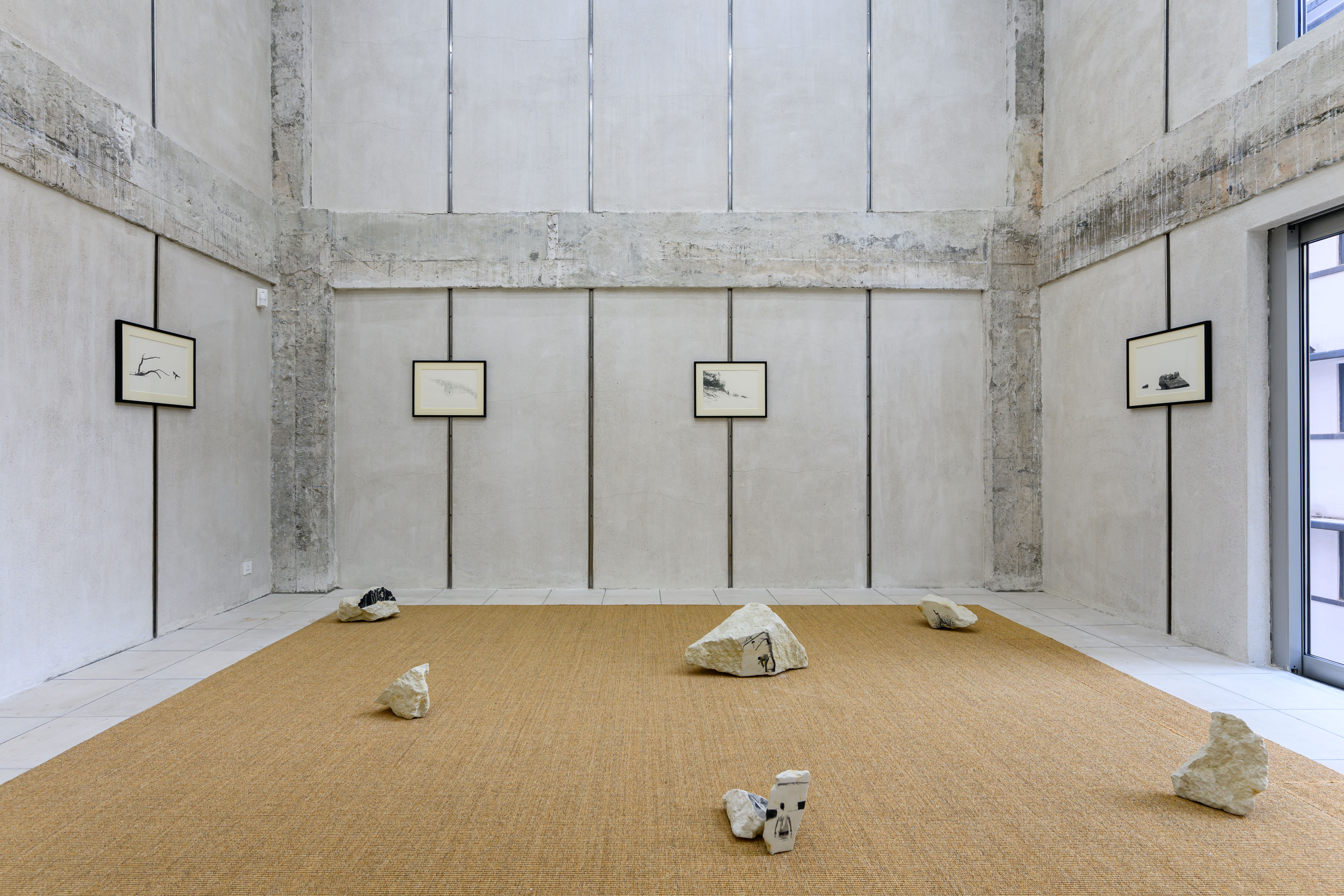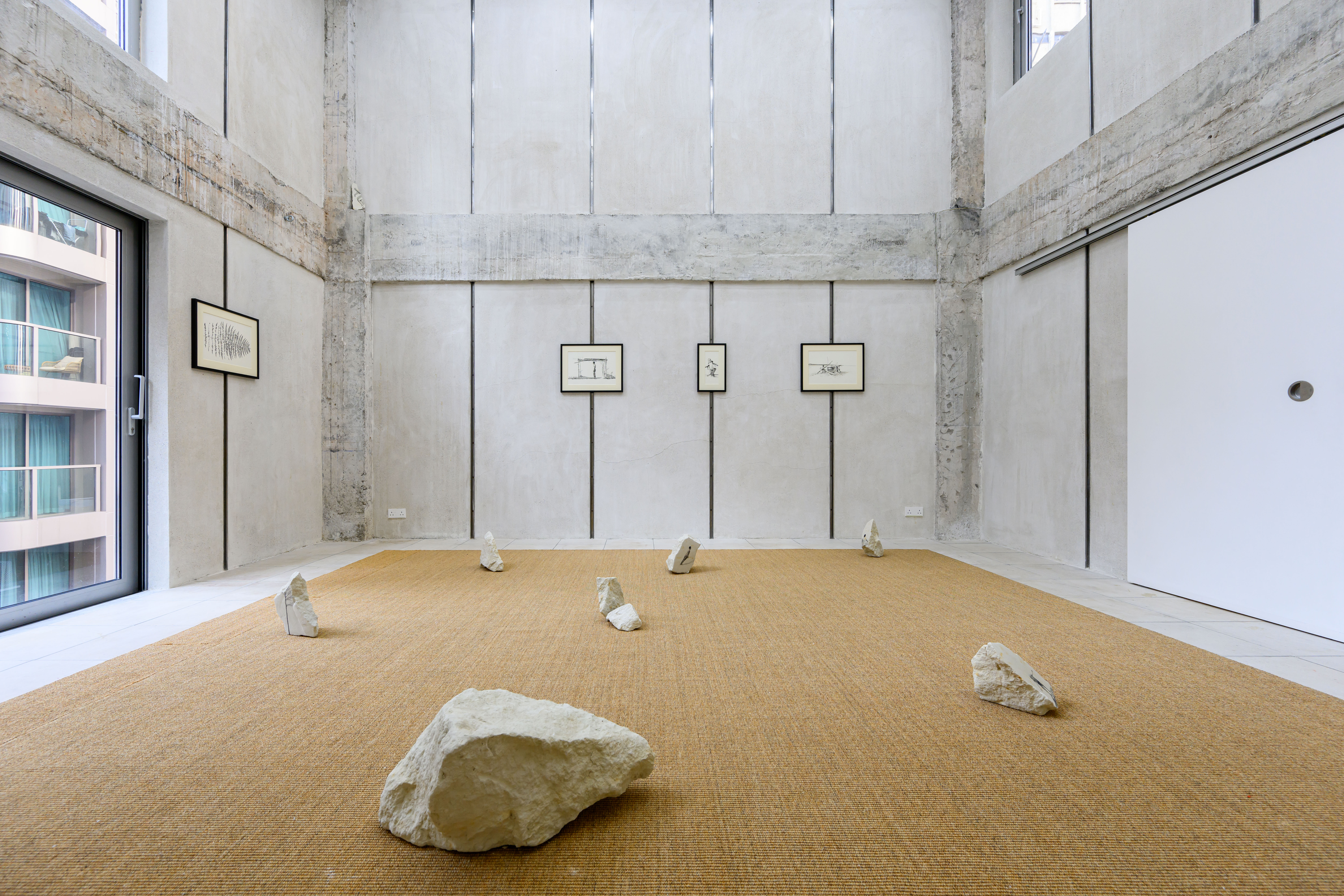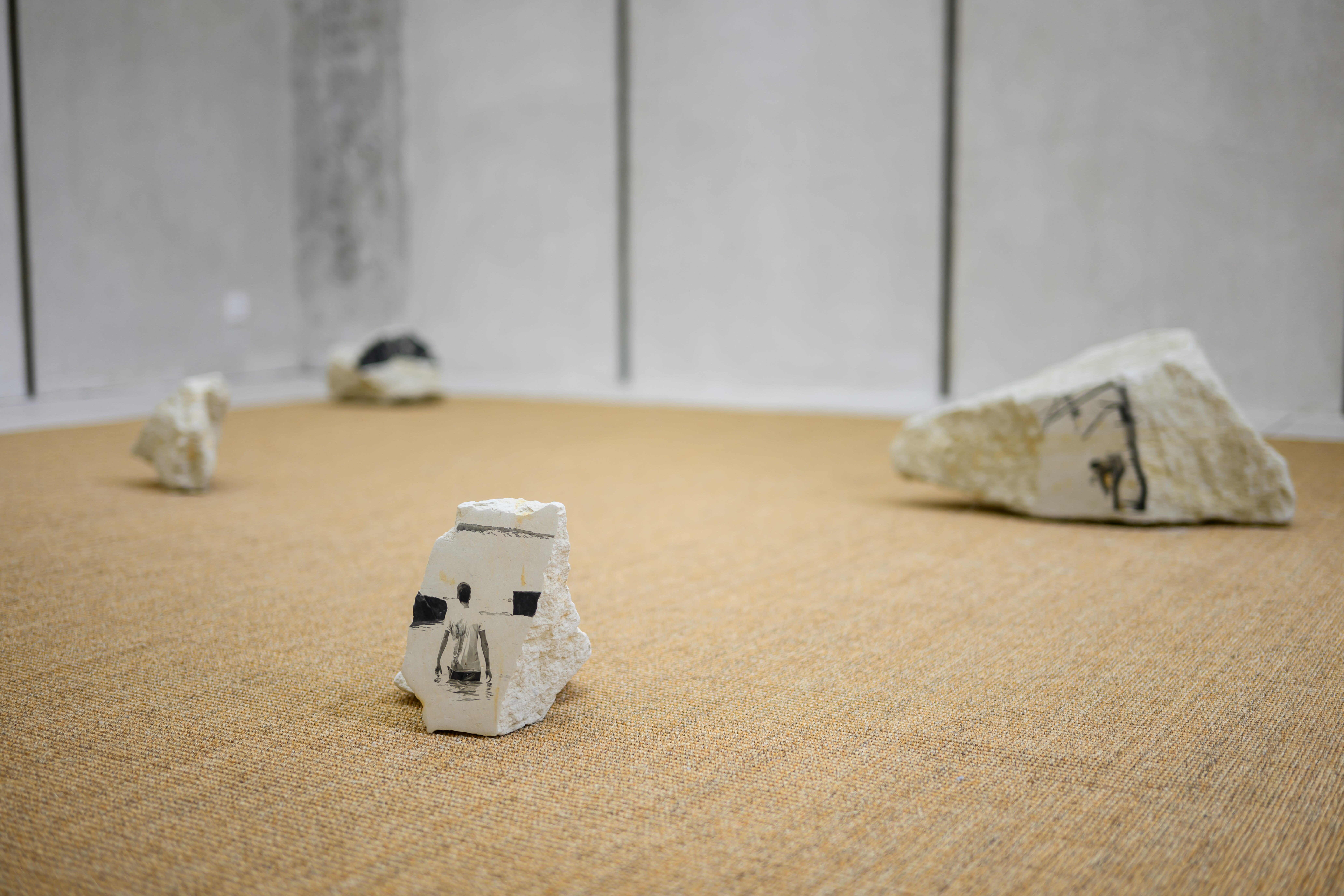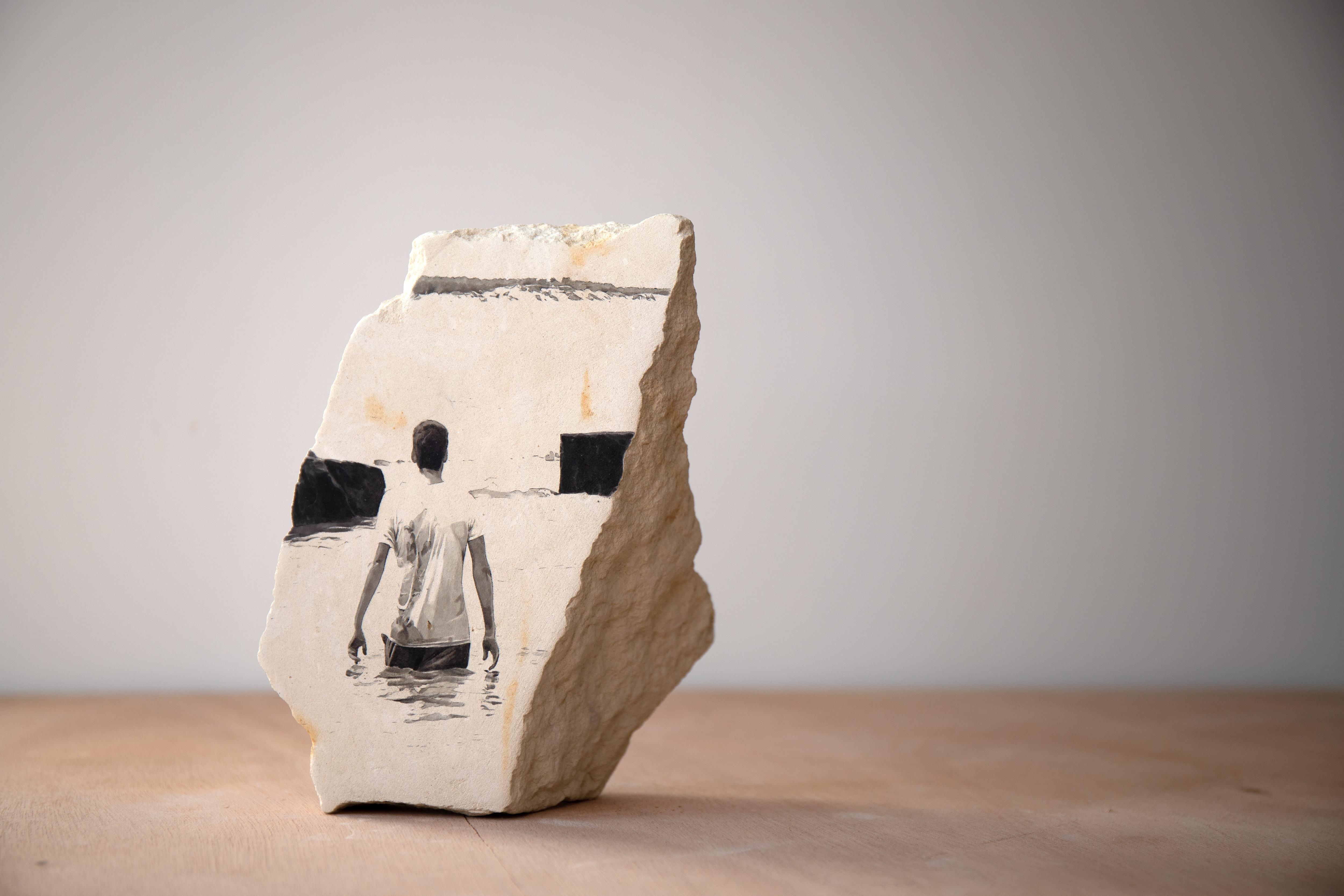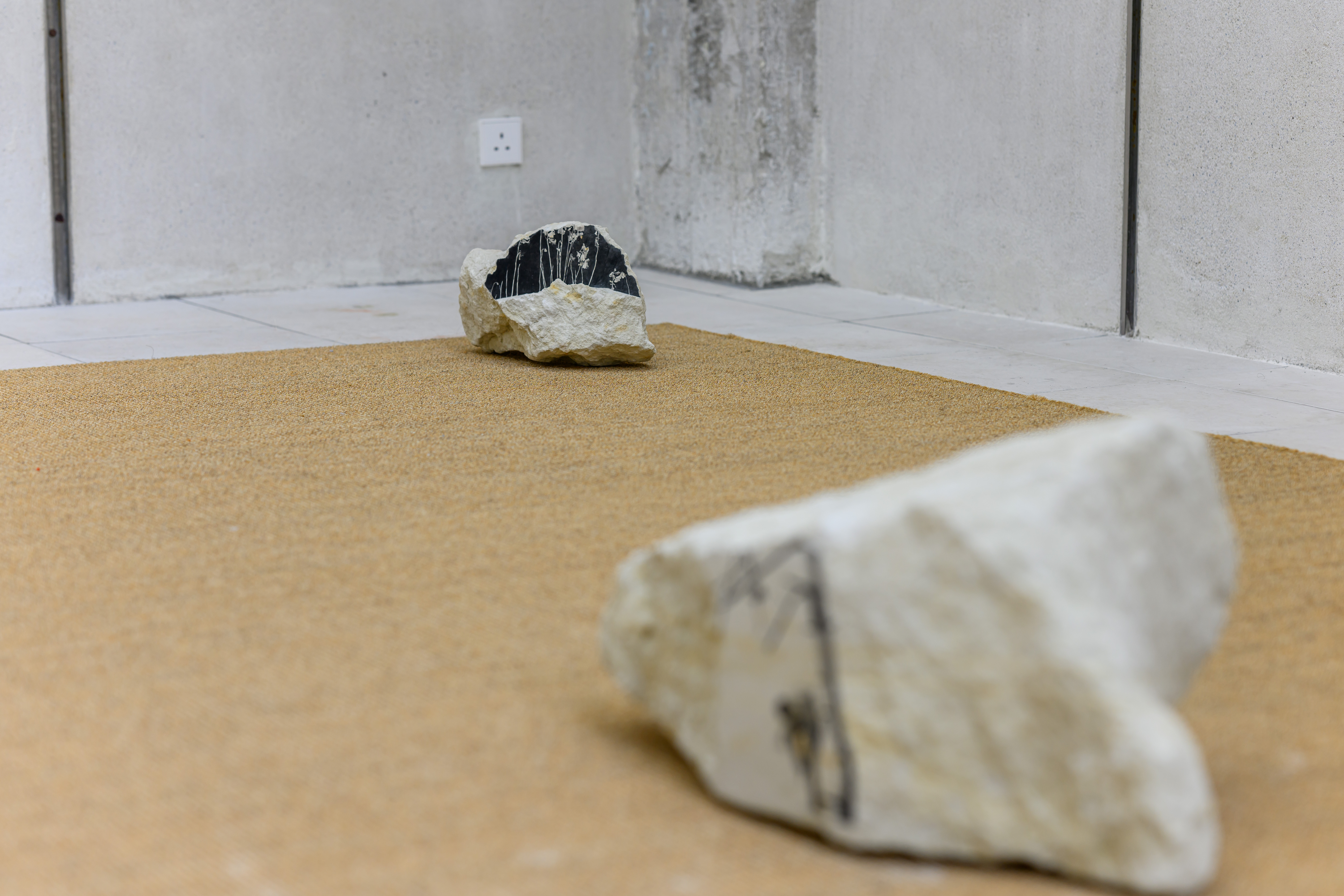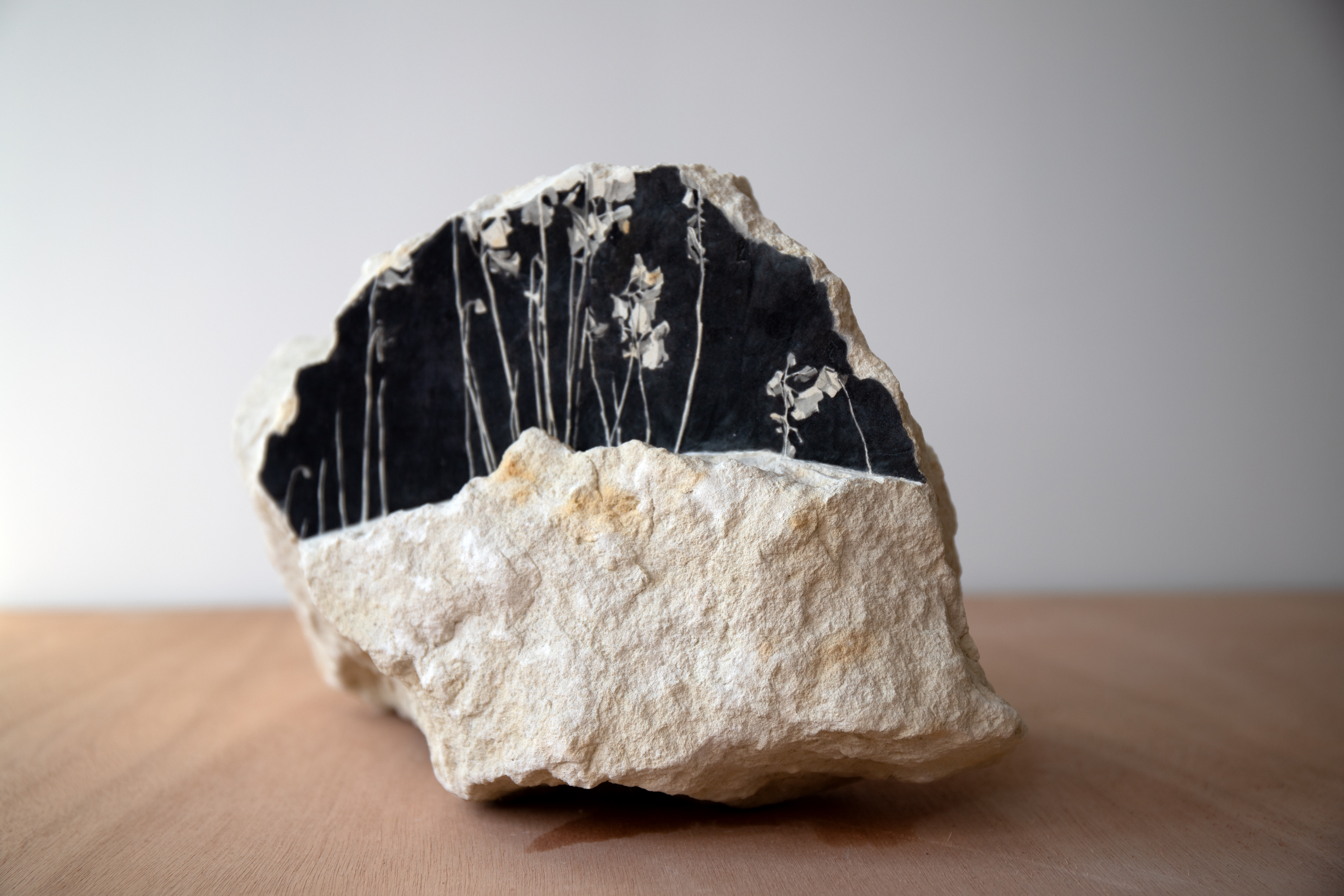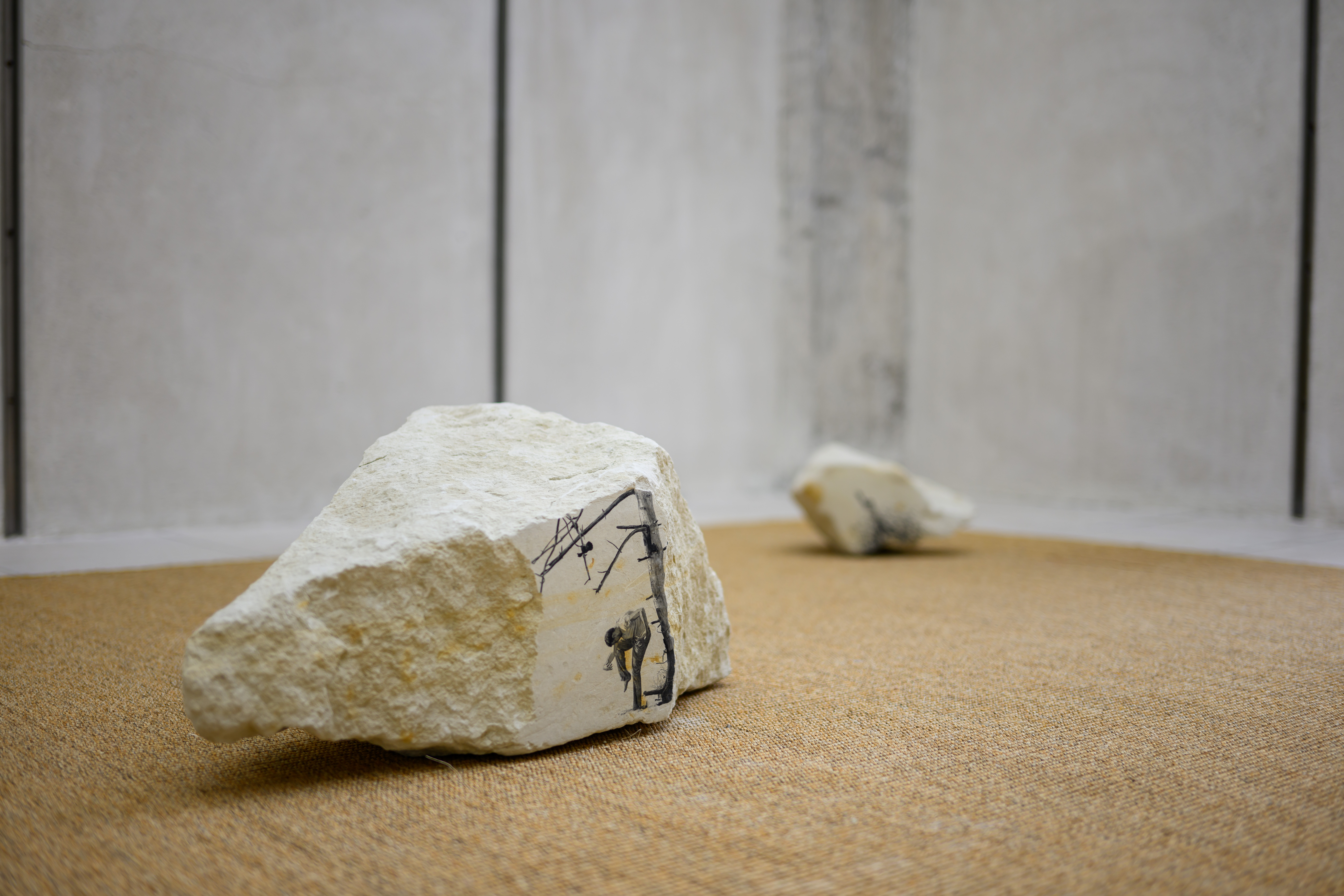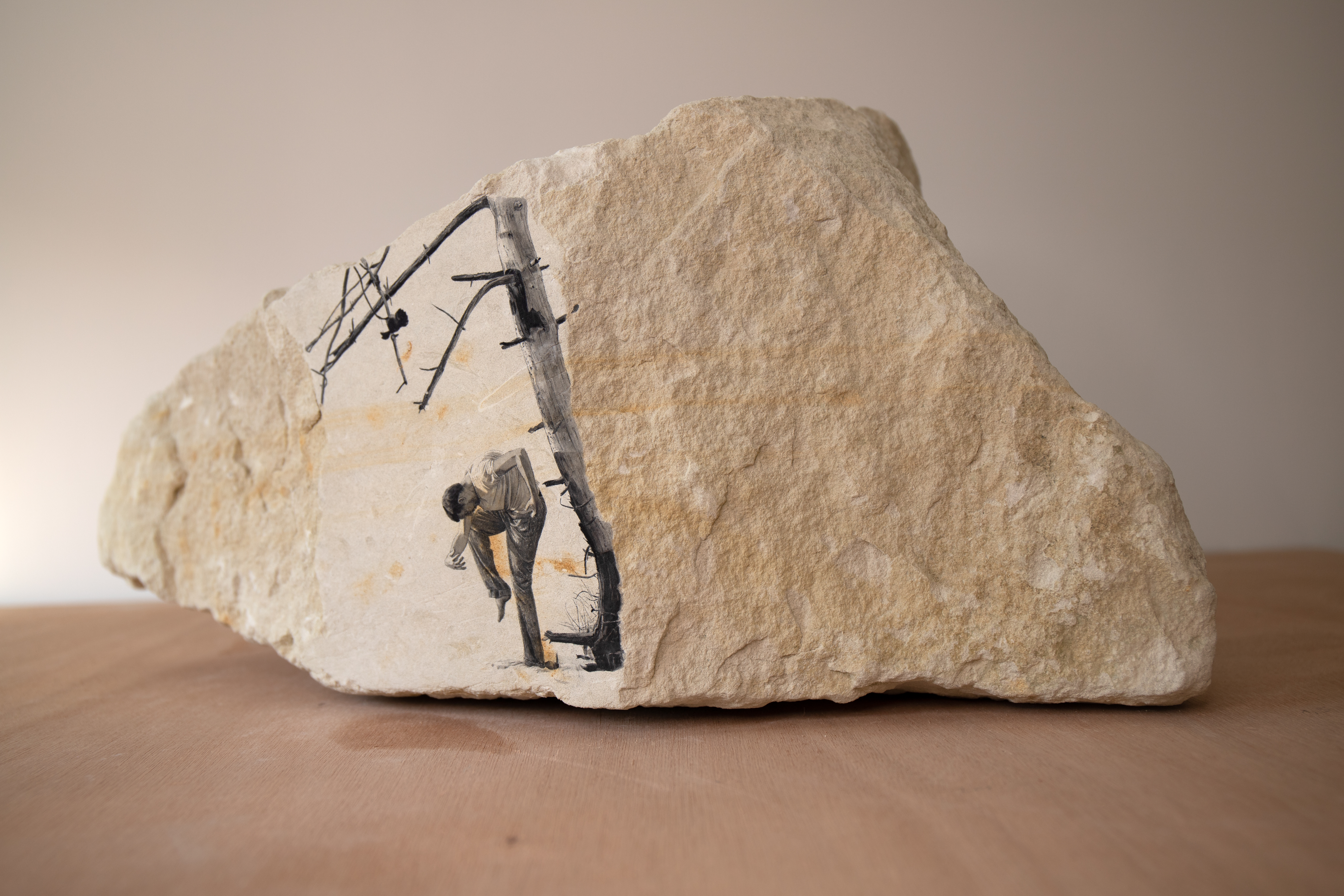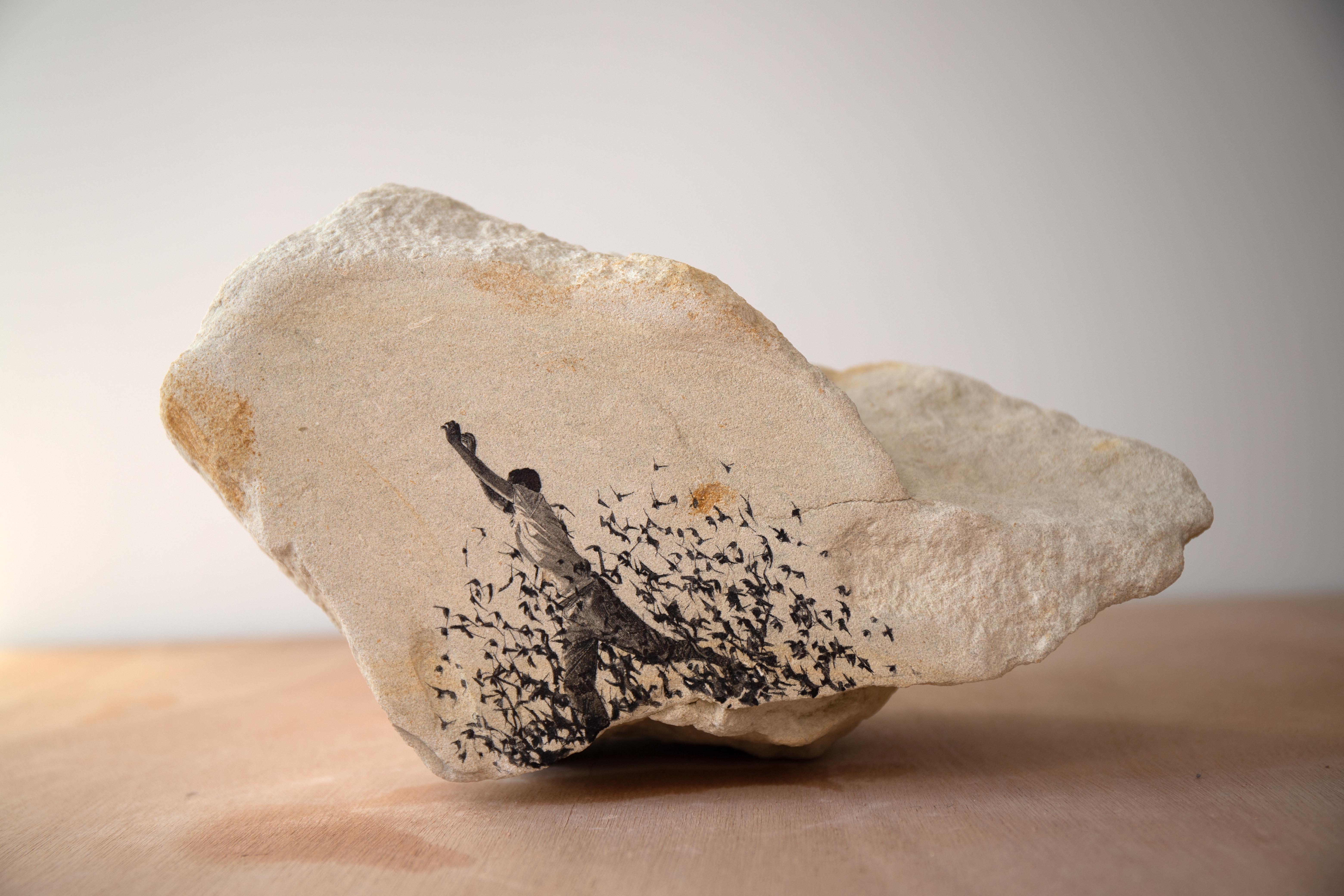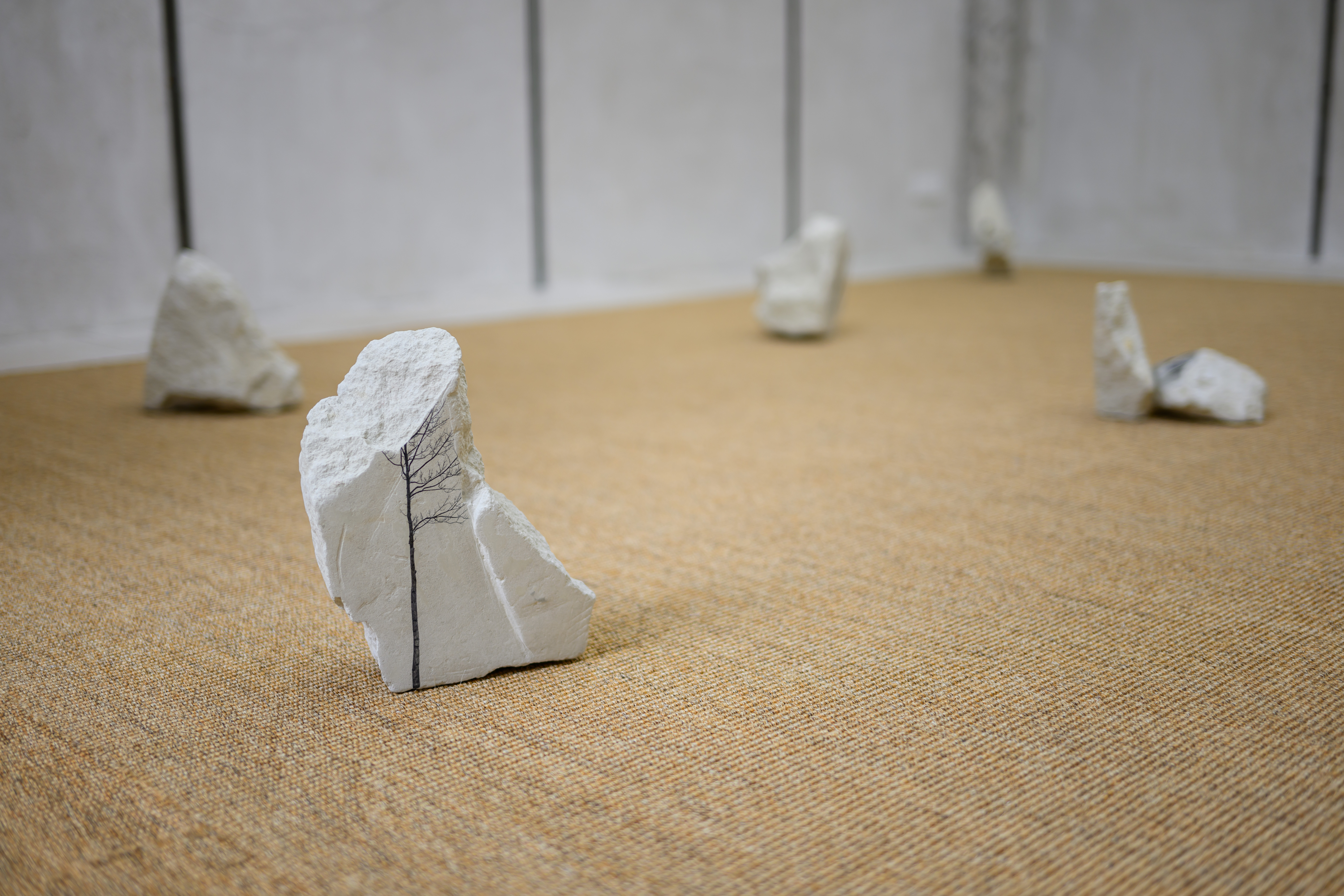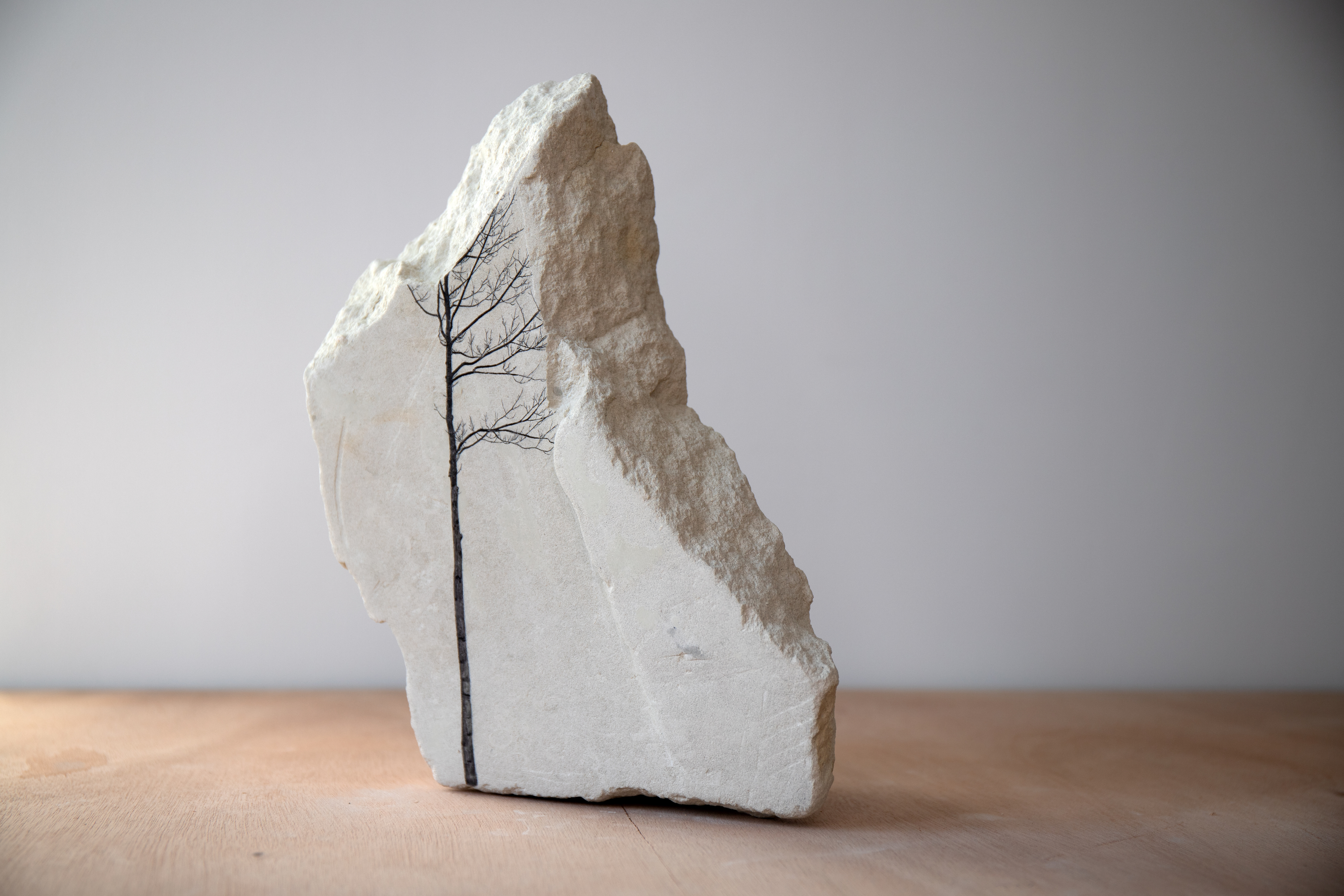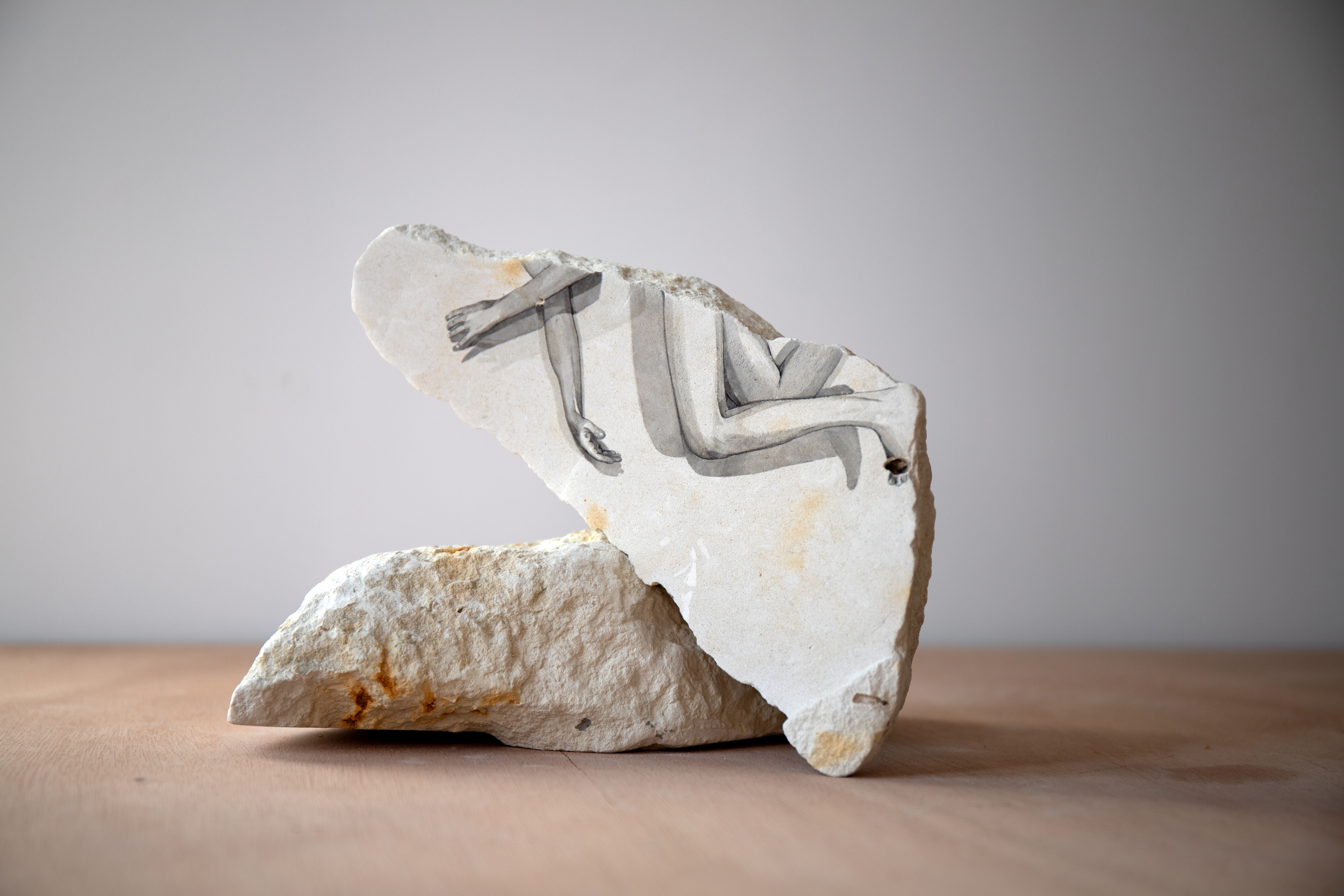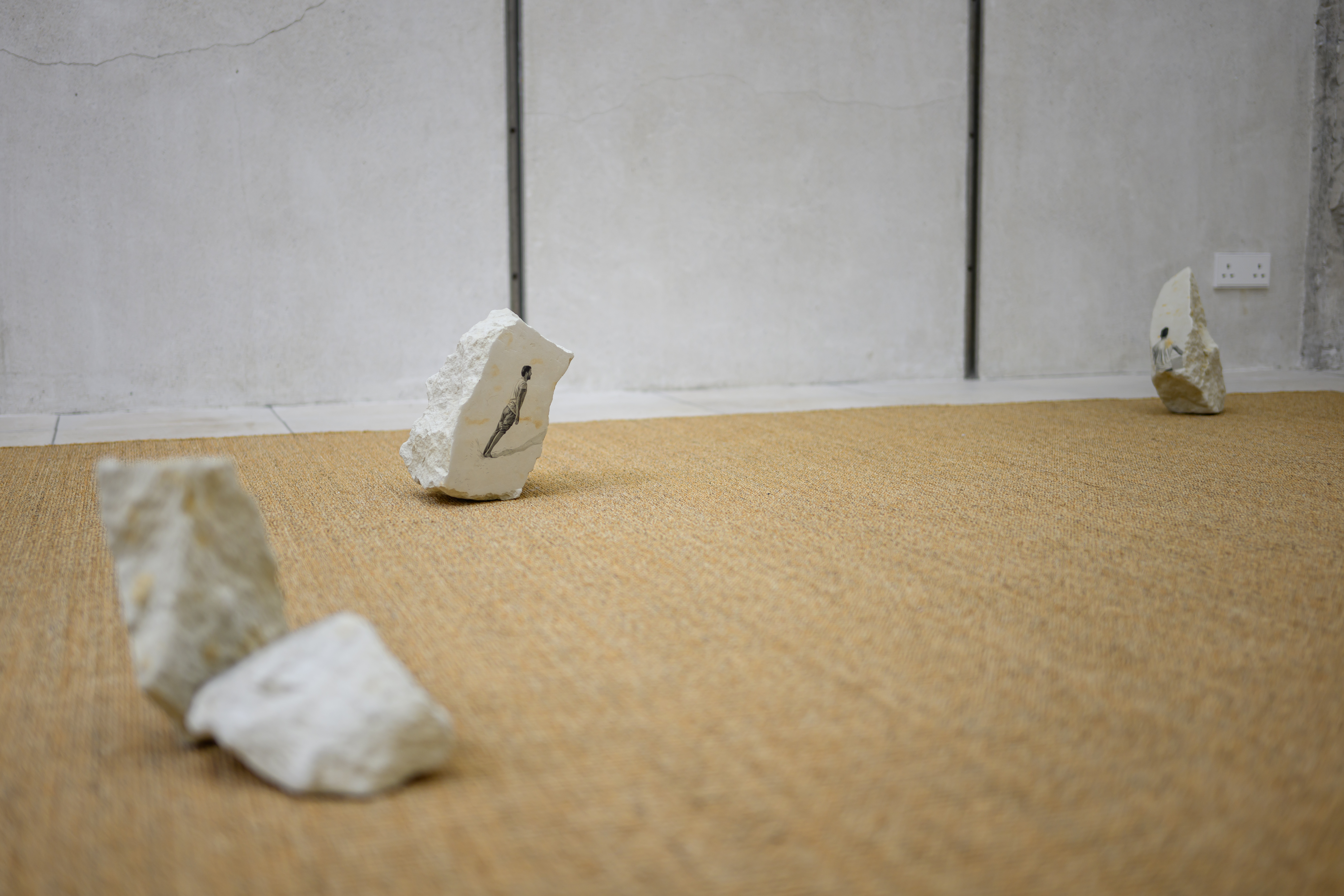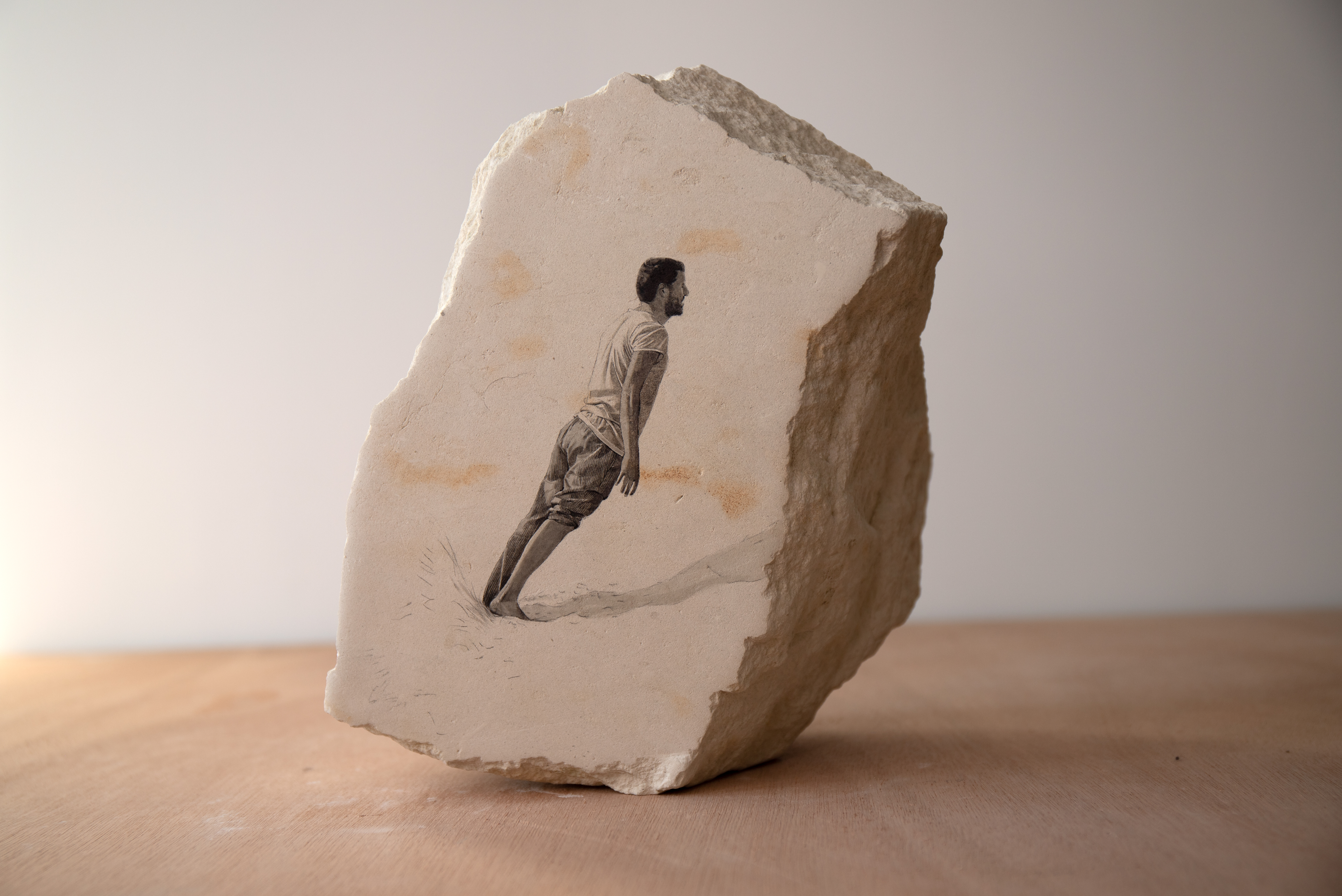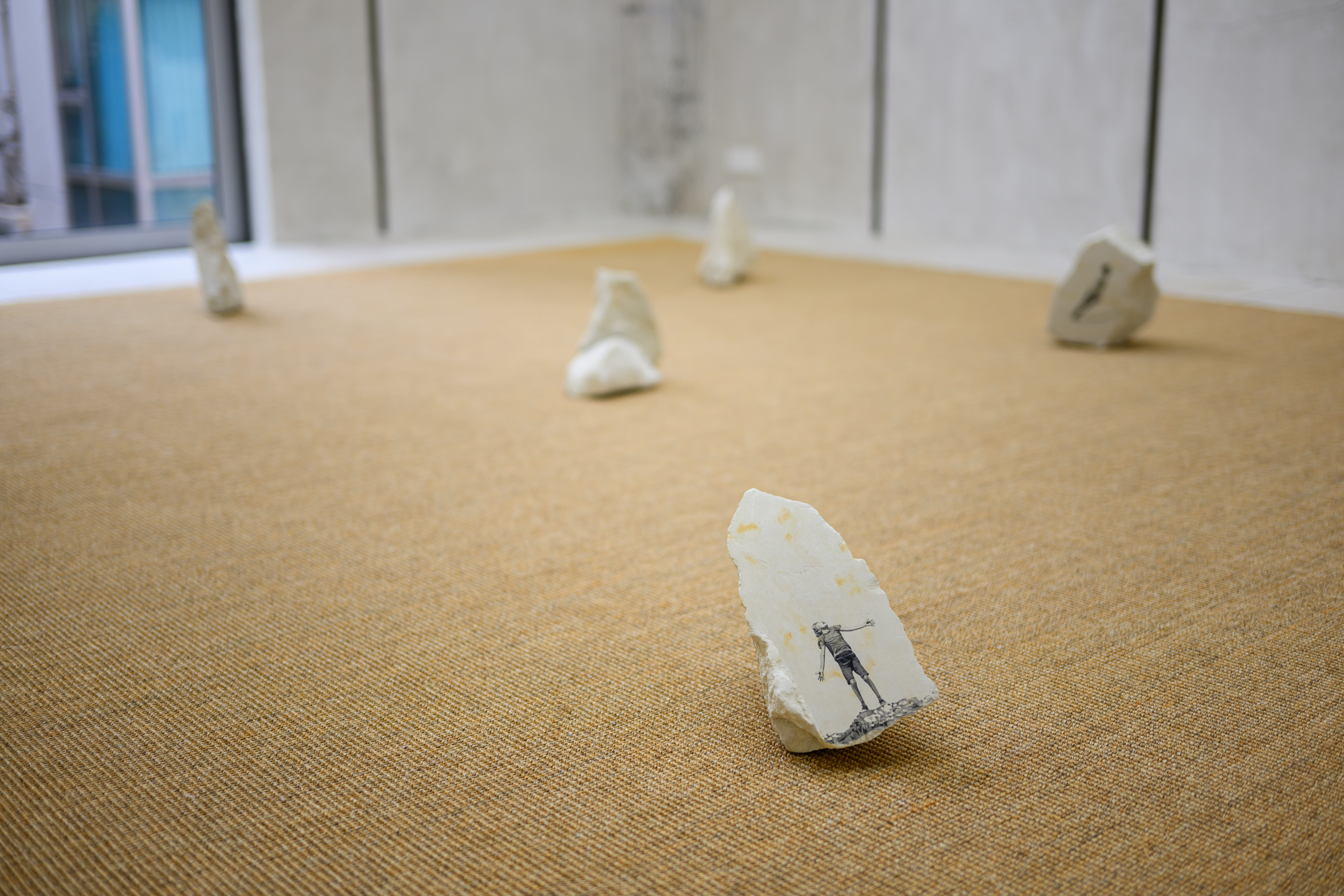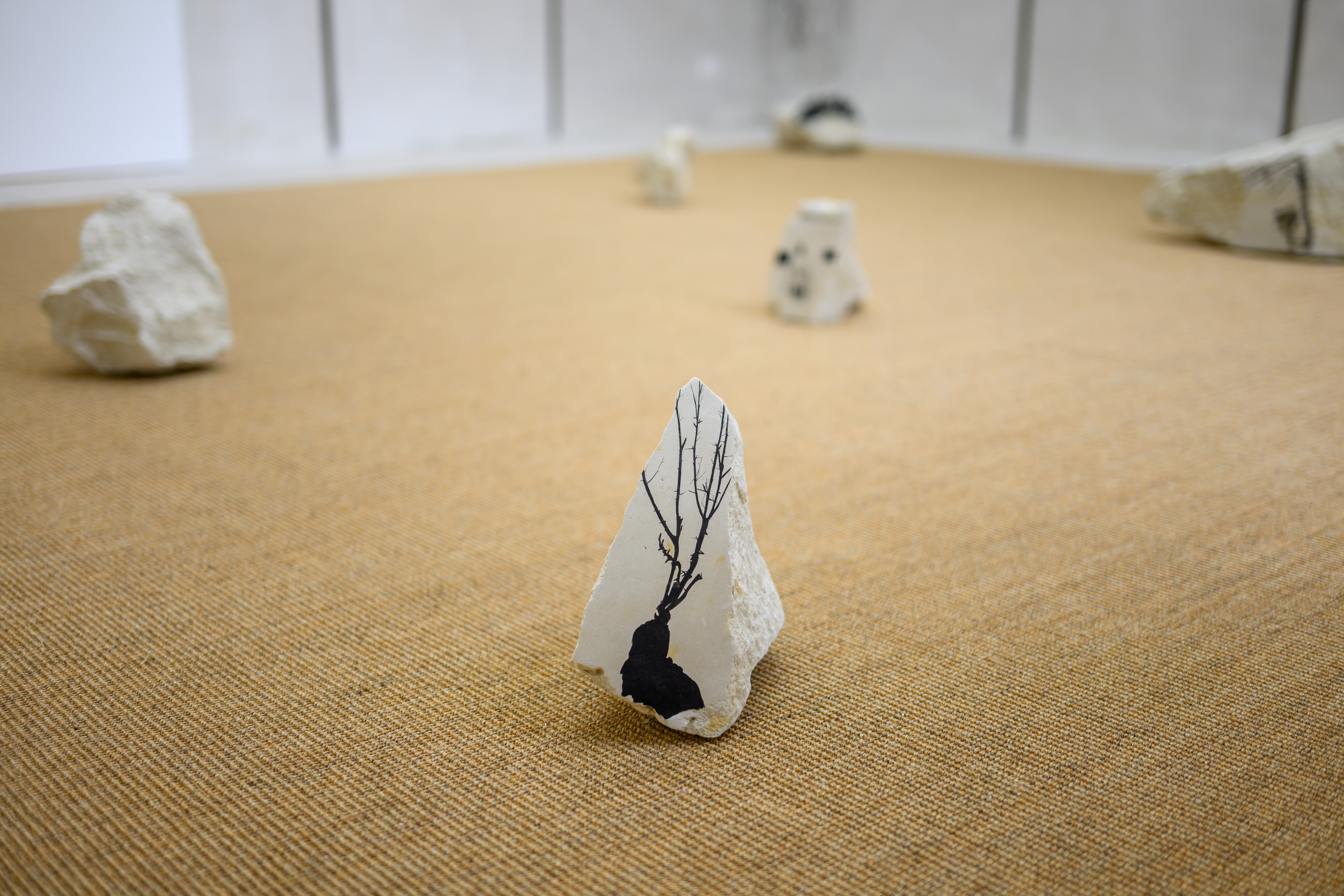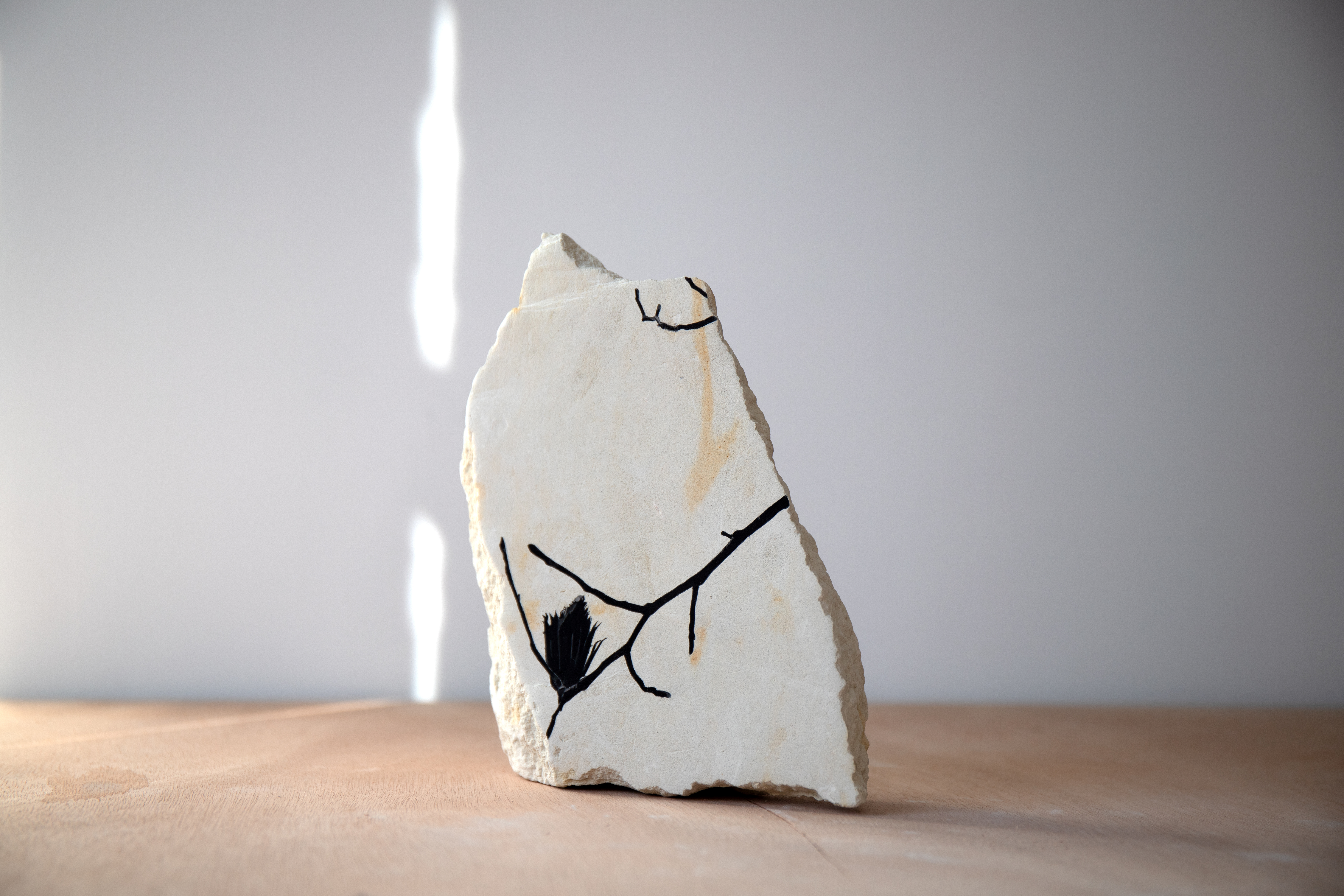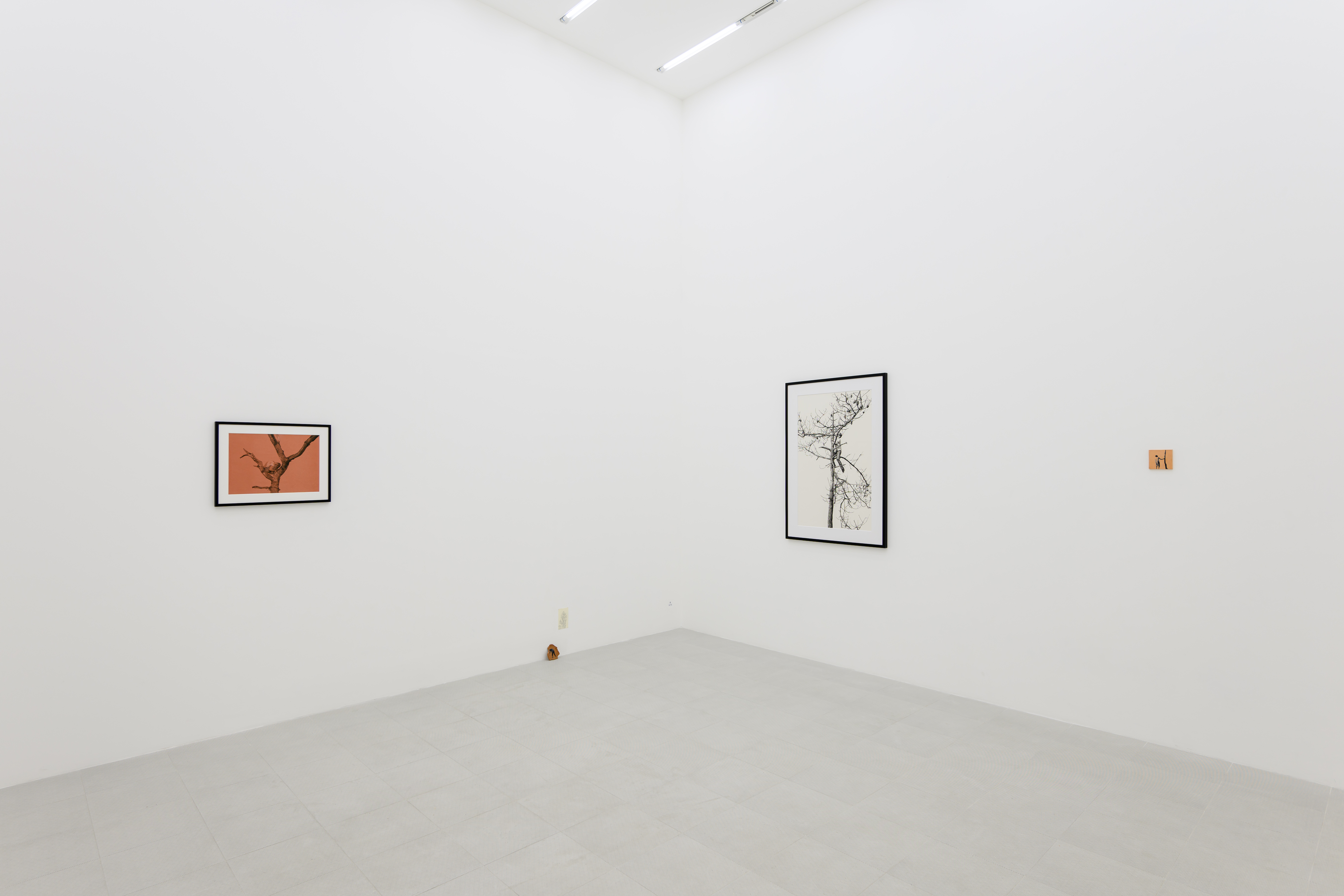Kiang Malingue is pleased to present “From island to island, the landscape that disappears”, an exhibition of recent drawings on paper, tuffeau stones and ceramics by Fabien Mérelle. The drawings are part of the ongoing project to portray the landscape and topography of Pointe de Gatseau on Oléron Island (Île d’Oléron) off the west coast of France, which began eight years ago.
A suite of thirteen ink on paper drawings continues to explore the unique landscape on Oléron Island, where the land gradually vanishes due to global warming. Mérelle initiated the long-term series in 2016, immersing his own avatar—a man in his pyjamas, always remaining in proximity to dreams and nightmares alike—into Oléron Island’s natural environment, occasionally interacting with man-made structures along the shores. After contemplating the environment for half a decade, Mérelle realized that he was drawn to the landscape because it has disappeared; drawings made in 2016 could no longer represent the reality of the island, where land is gradually eroded away as sea level rises. Making visible the water for the first time, a large number of drawings shown in “From island to island, the landscape that disappears” are effectively documentations of trees, rocks, bunkers and barricades that are now under water.
In his meticulous style that is deeply informed by traditional Chinese art—its way to calmly face “the silence of the image,” to be at the service of the landscape, and to actively incorporate the viewer’s imagination—Mérelle captures in drawings the solo performances he carried out on Oléron Island over the years: climbing a tree for a better view (Lookout tree, 2024); embracing a tree chunk in an act of solidarity (Until the end, 2024); dancing, following the movement of branches half-drown in water (Dance, 2024); lying on the remains of a Second World War bunker (Bunker, 2024), or standing straight in a hut (Framed, 2024), as if for measurement or producing alibis for these natural or man-made fragments that are no longer visible. For Mérelle, the deliberately sparse landscapes speak directly of spiritual and physical freedom, as well as the desire to “be one with the nature without disturbing it.”
Other drawings on paper envisage scenes that are more fantastical in essence, such as Mezzogiorno (2024), which features the artist’s silhouette and is partially inspired by origin stories of Italian Tarantella dances—dancing as a way to, through memory and fantasy, escape madness and death. More than a dozen ink-and-alcohol drawings on tuffeau stones and ceramics underscore the fragmentary quality of the found objects that were originally used as construction materials and decorations, demonstrating the artist’s interest in exploring habitats and archaeological elements, and in creating art in situ. By presenting drawings that are also sculptural in form, and by juxtaposing punctilious depictions with pseudo-organic shapes, Mérelle reflects on the transitory nature of civilisation while envisioning intercontinental, archipelagic connections between islands and lands.
From island to island, the landscape that disappears Fabien Mérelle
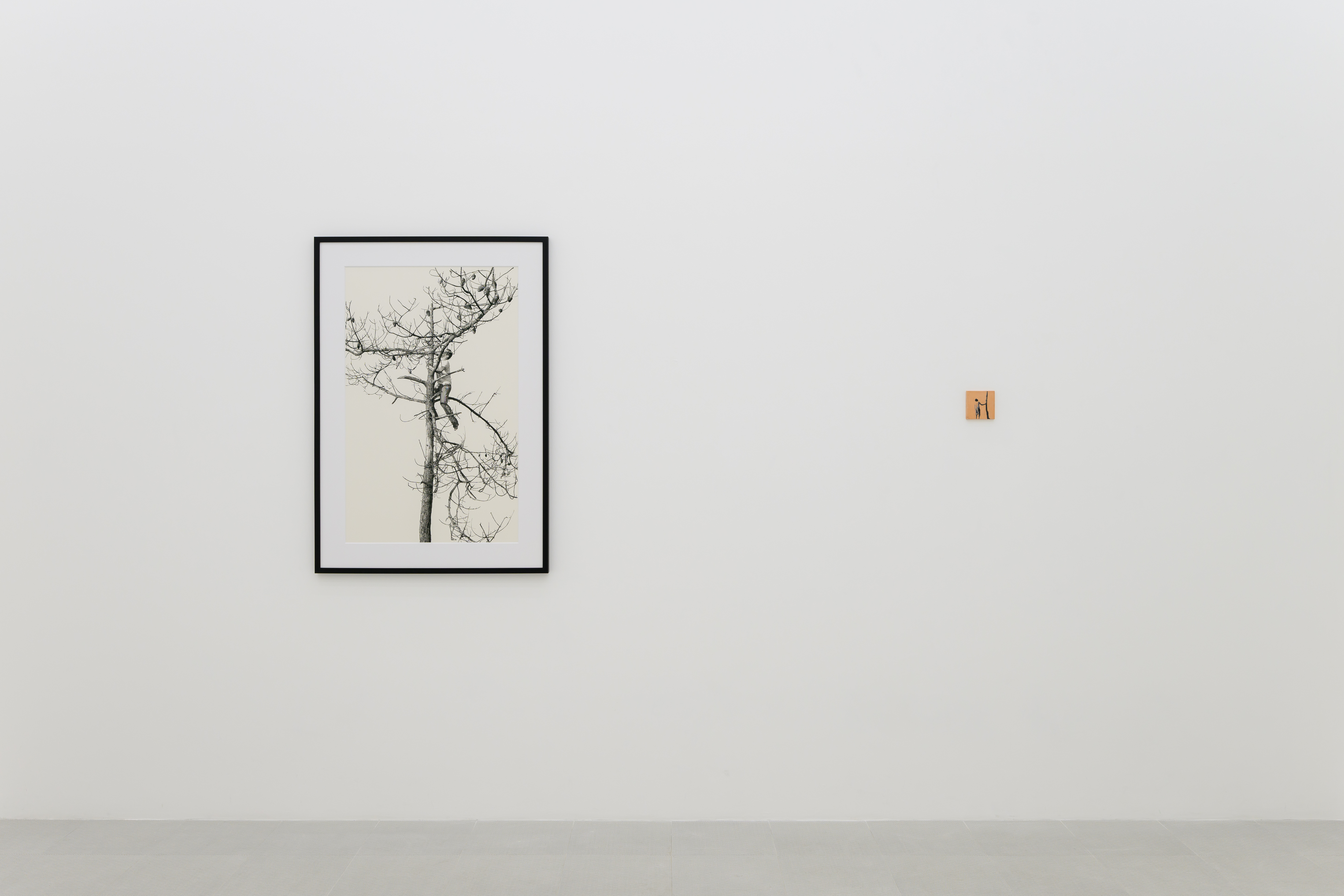
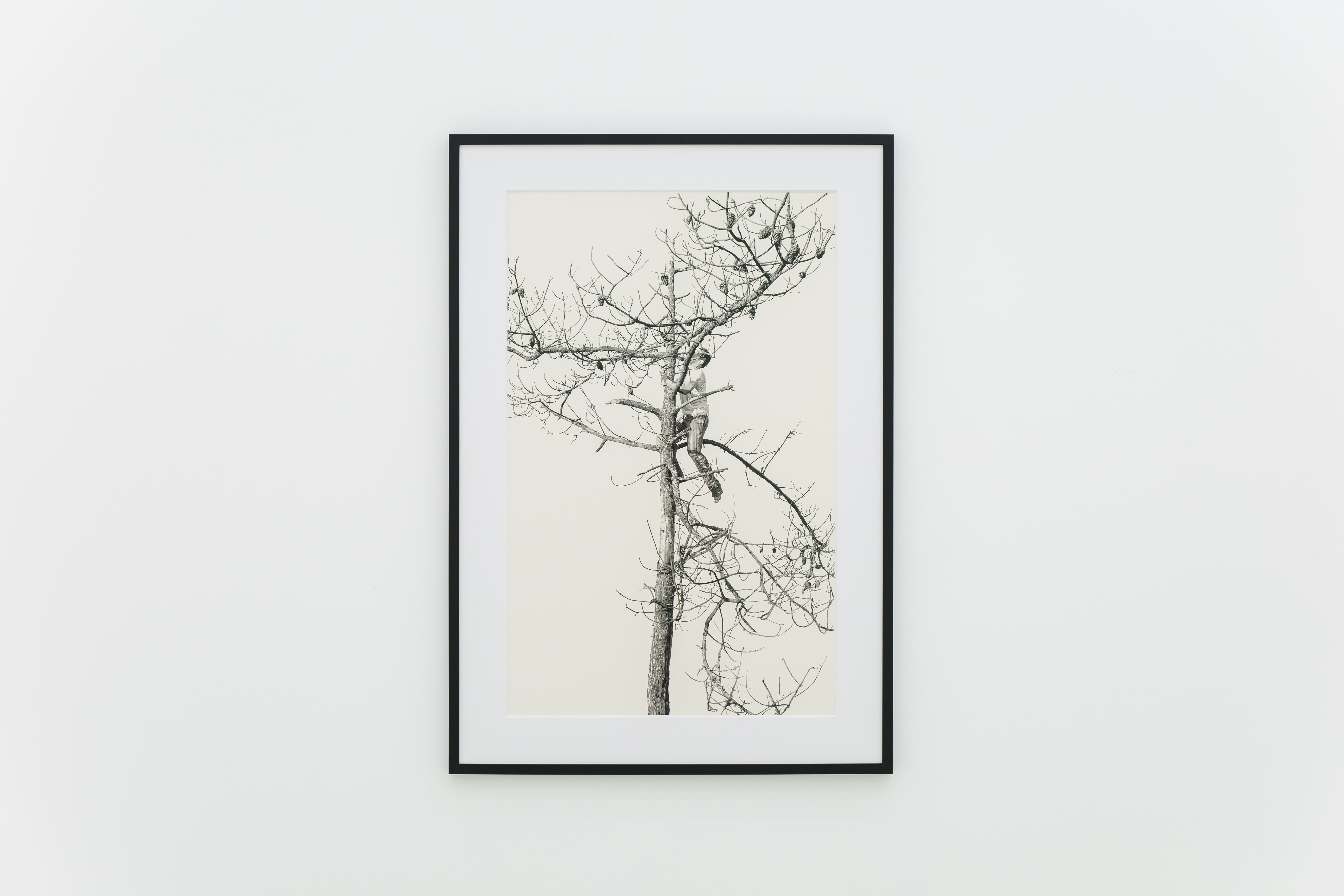
Ink and pencil on paper
Unframed: 99 x 63 cm
Framed: 120 x 84 cm
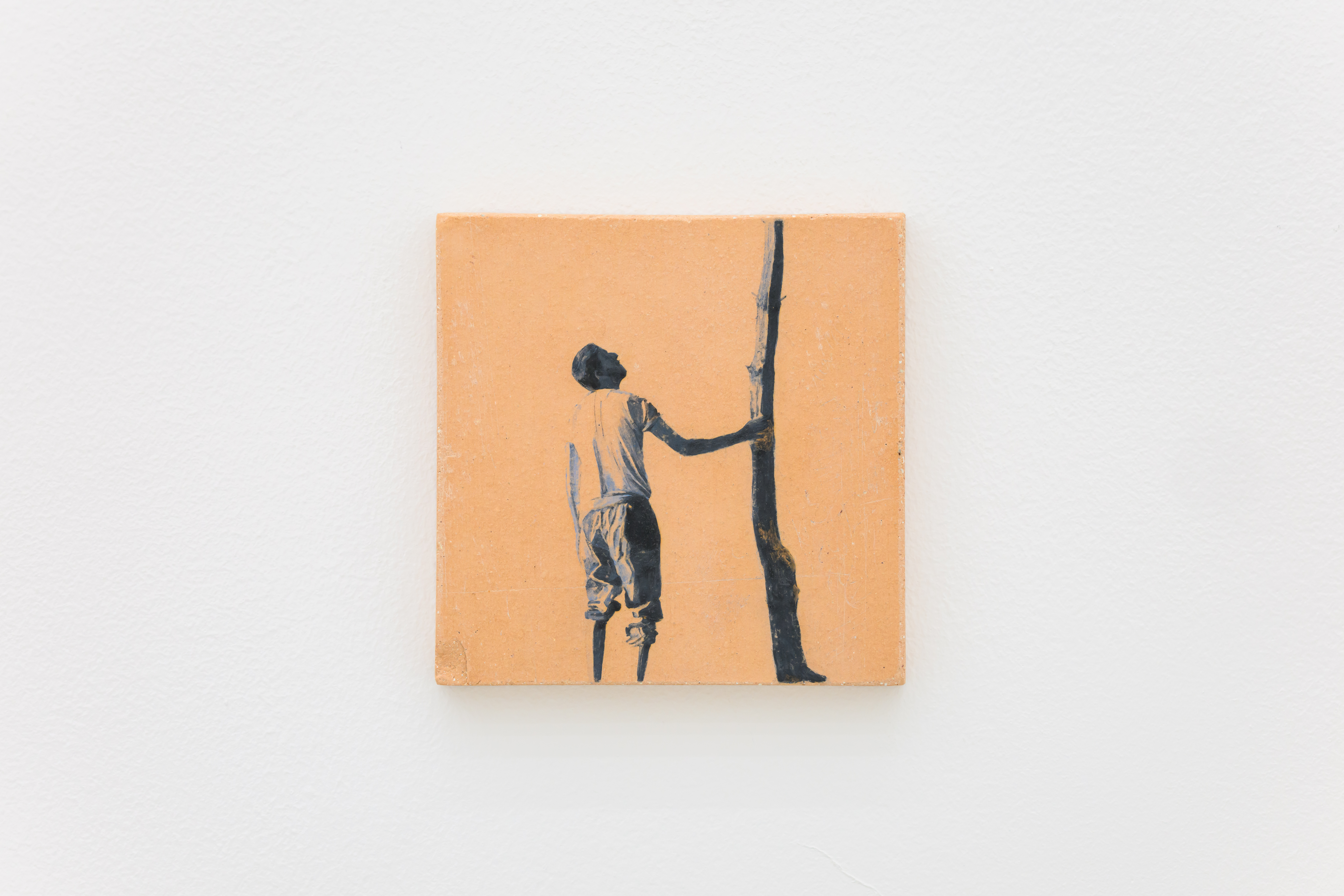
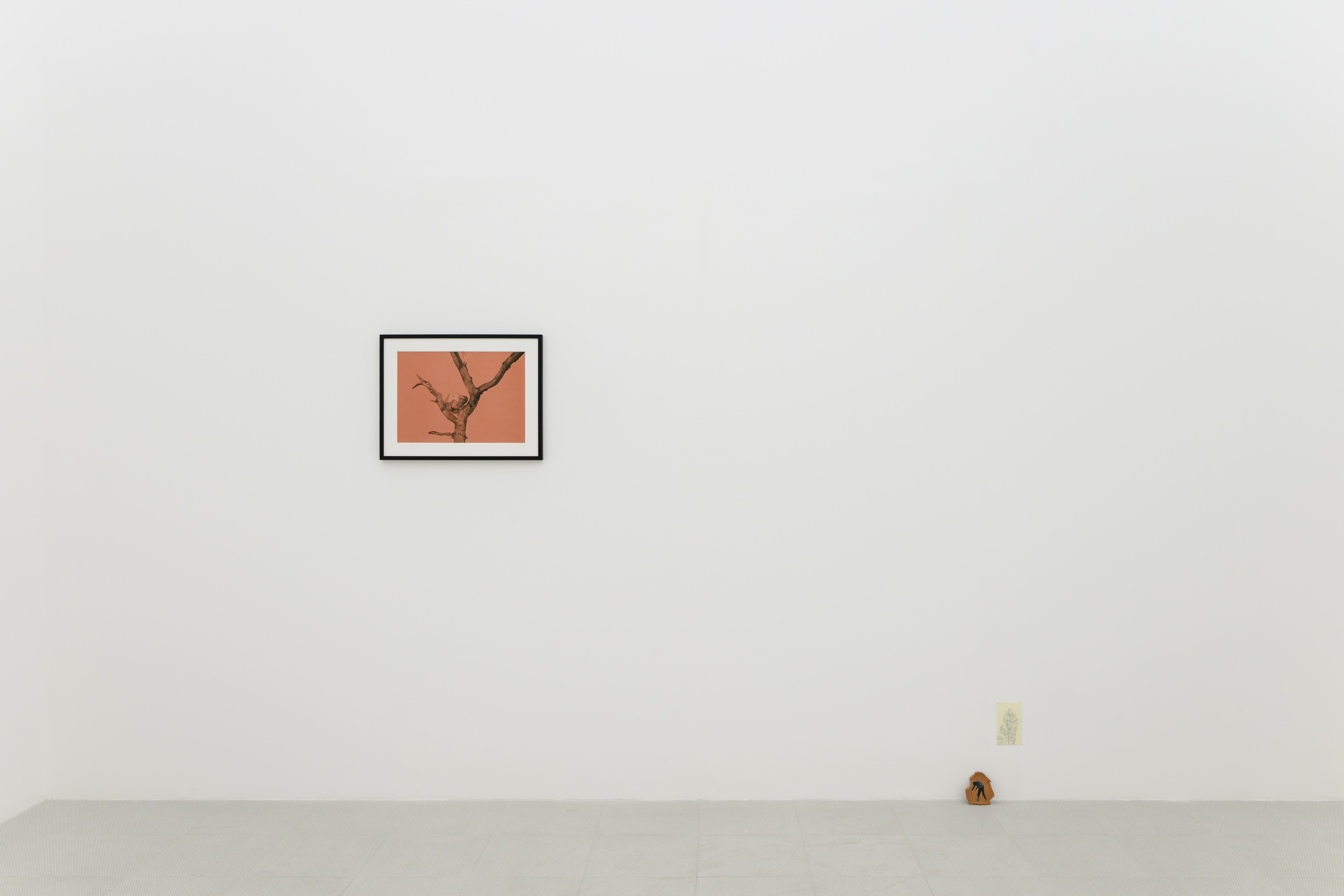
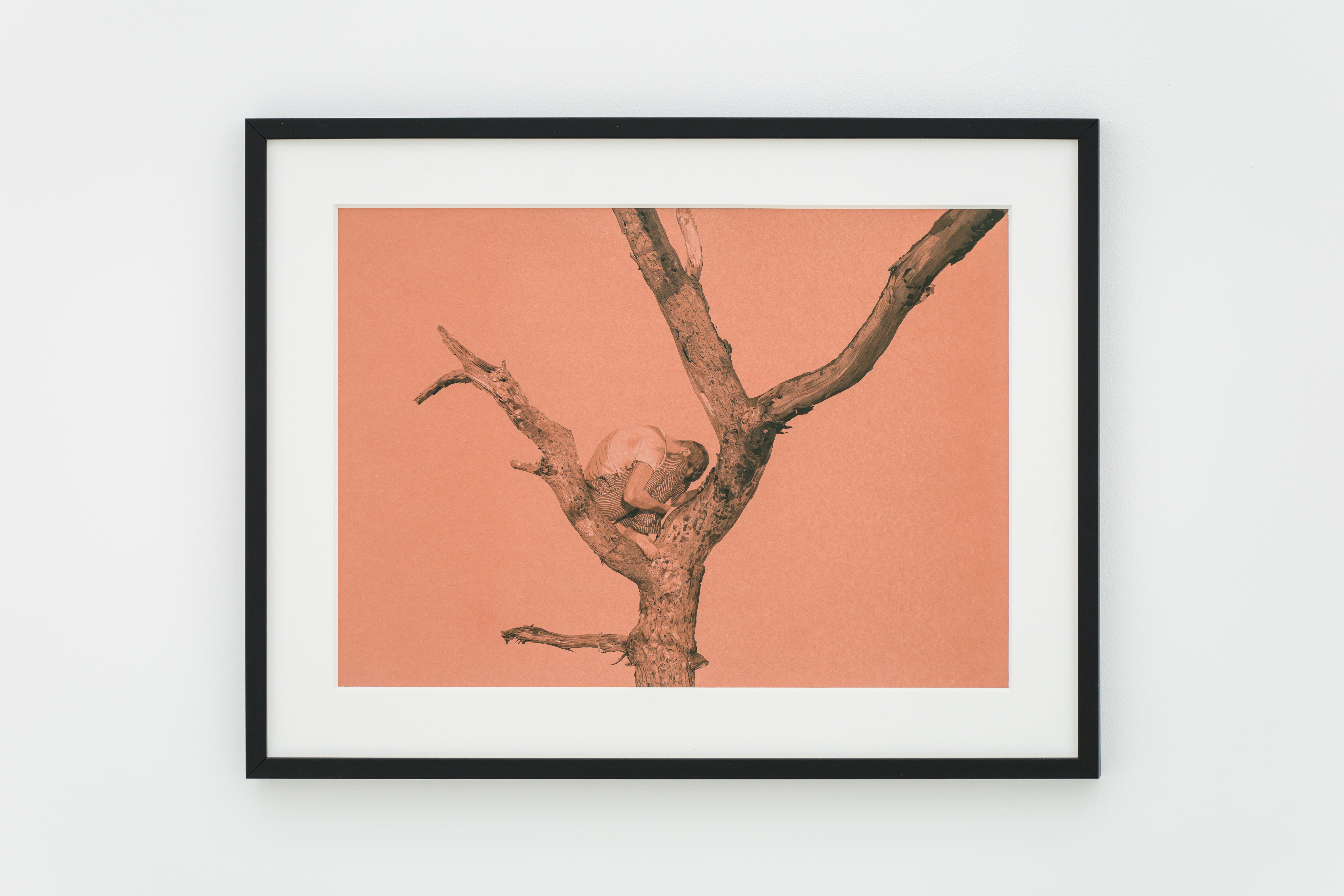
Framed: 46.7 x 60 cm
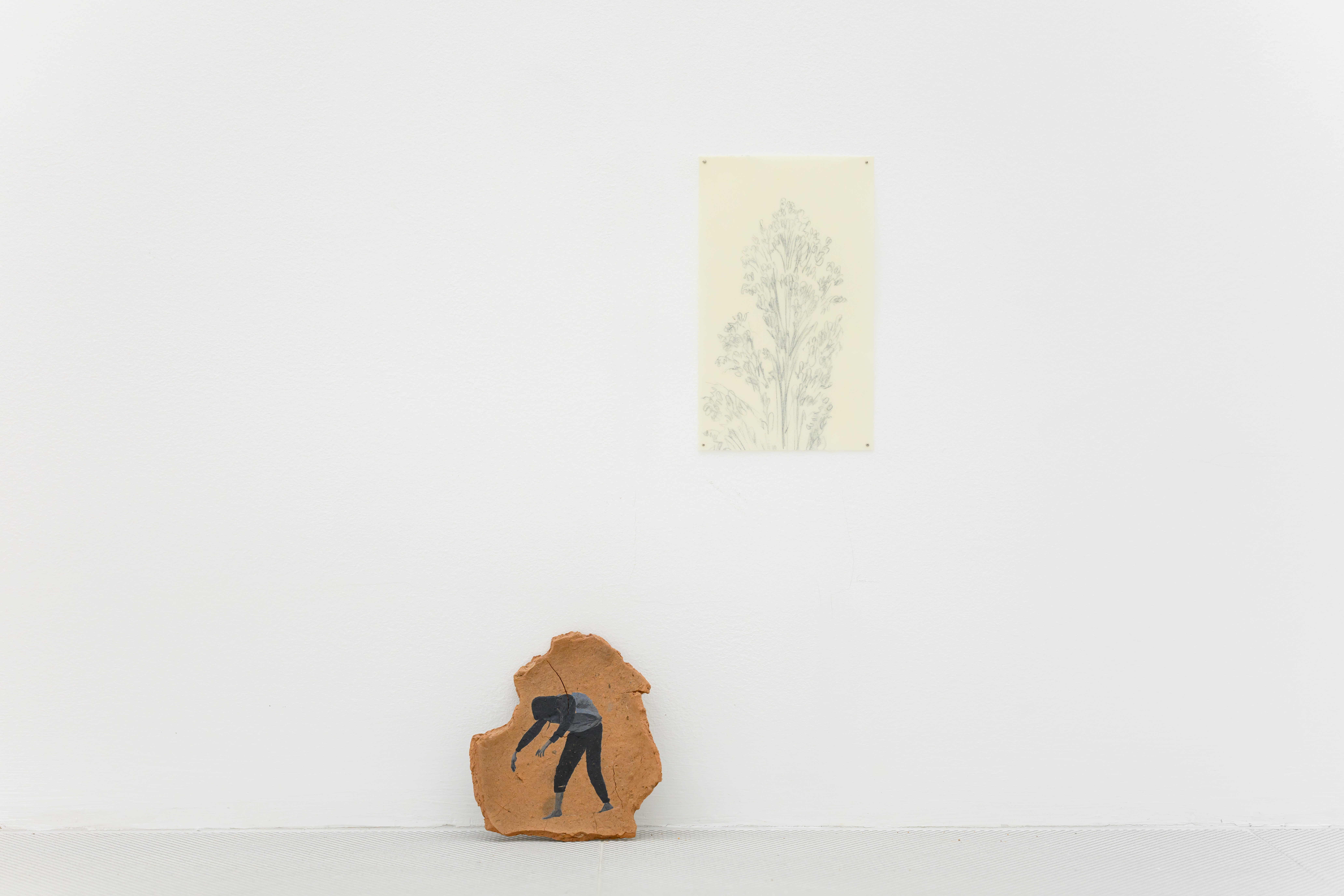
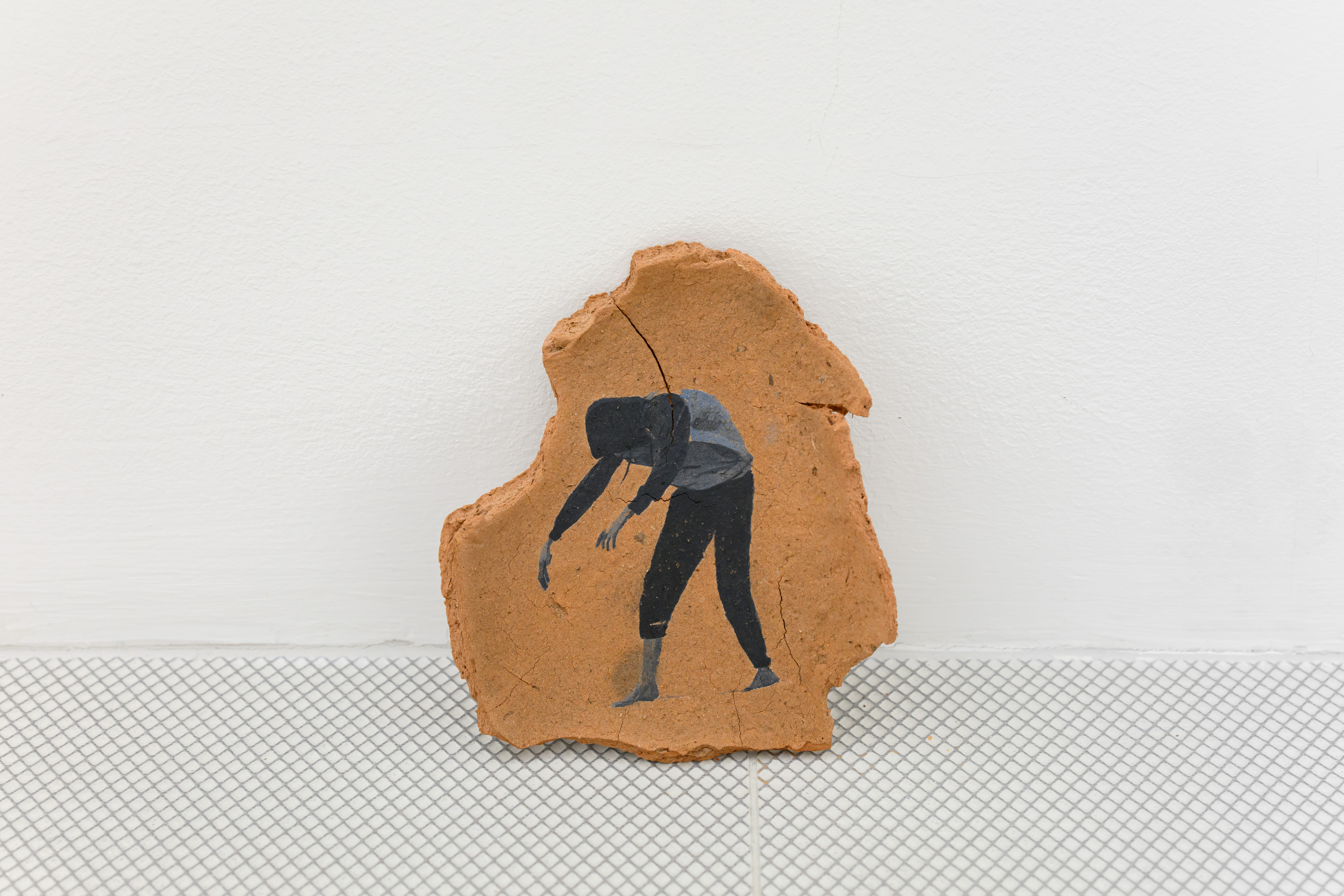
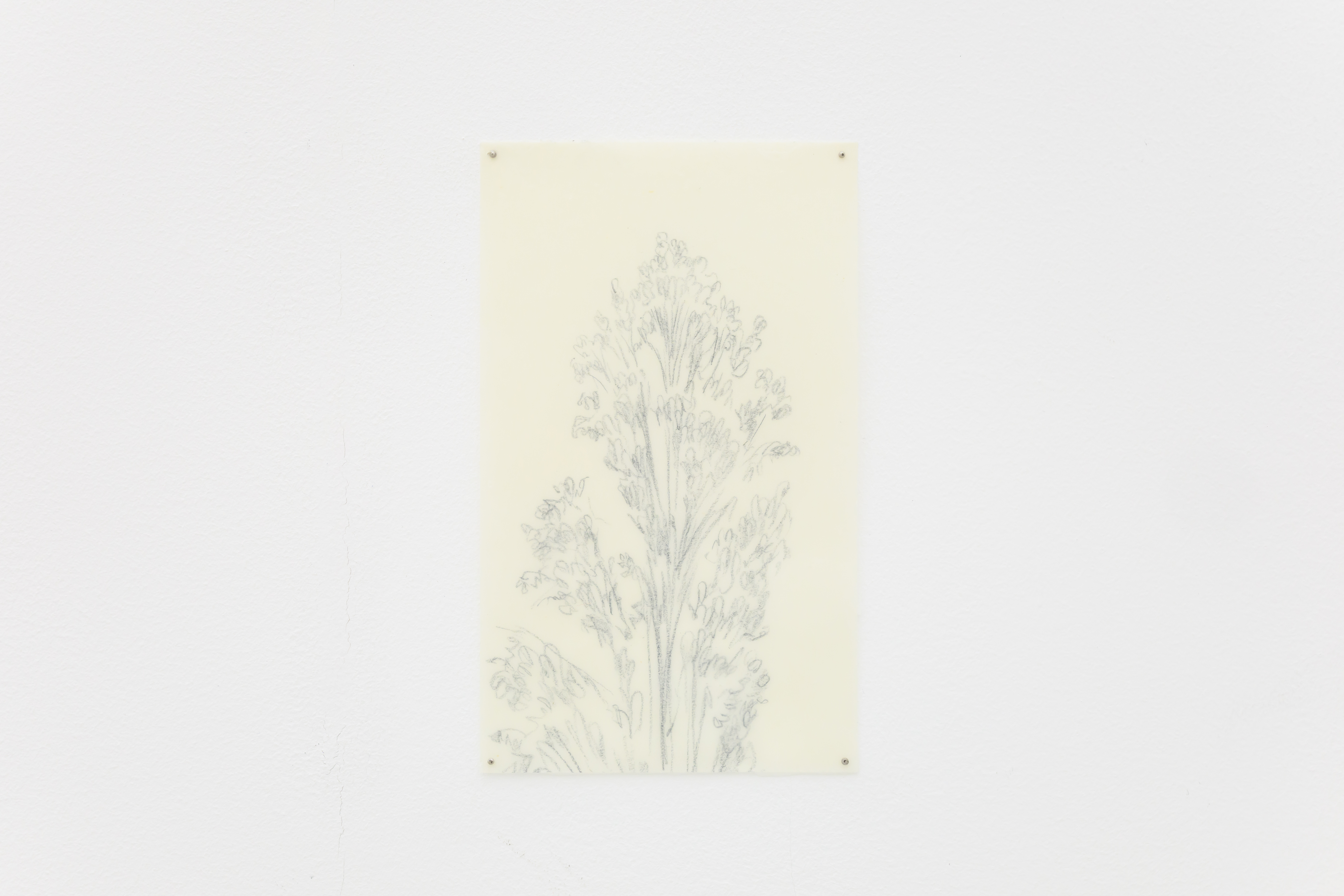
Ink on wax coated paper
16 x 9.5 cm
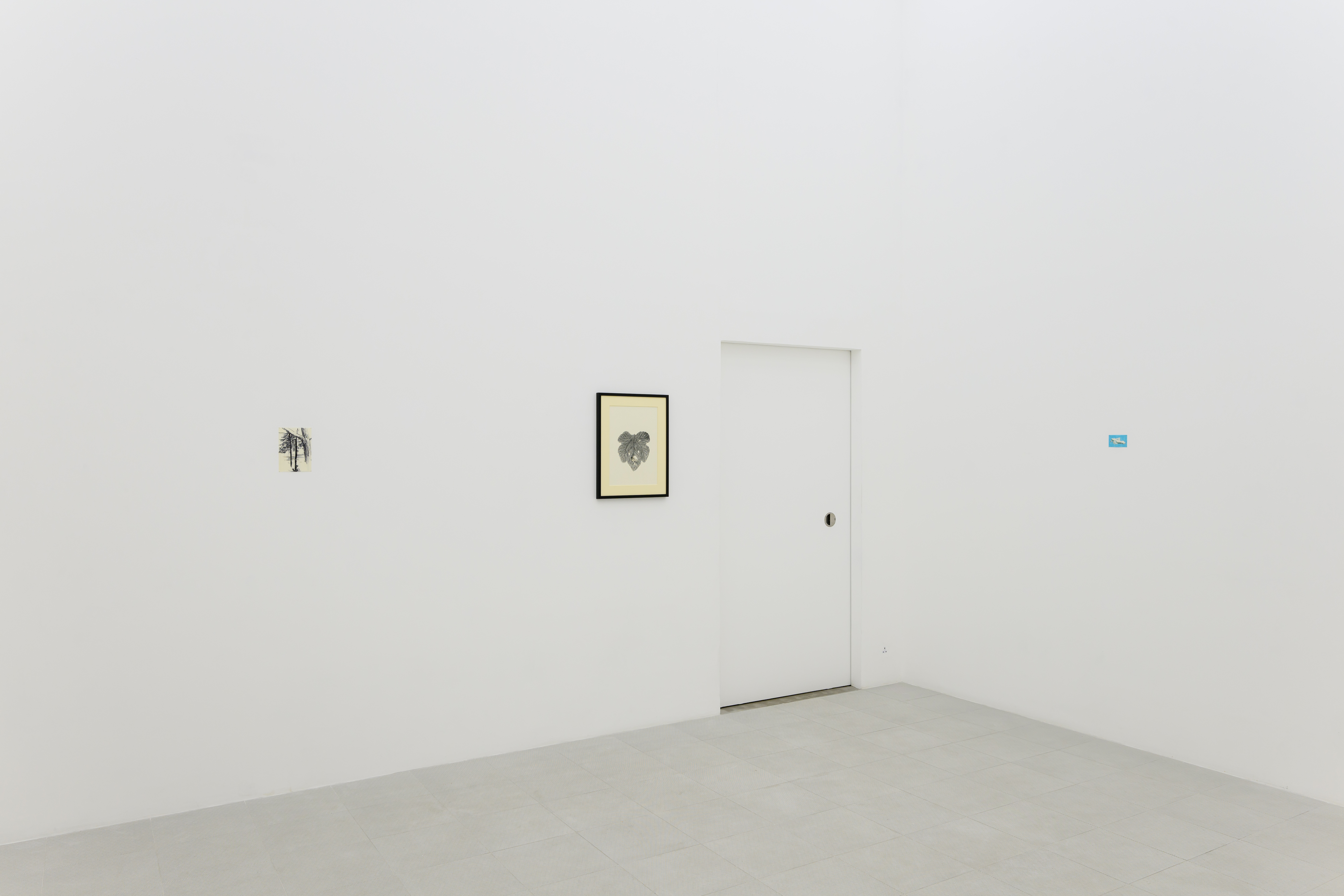
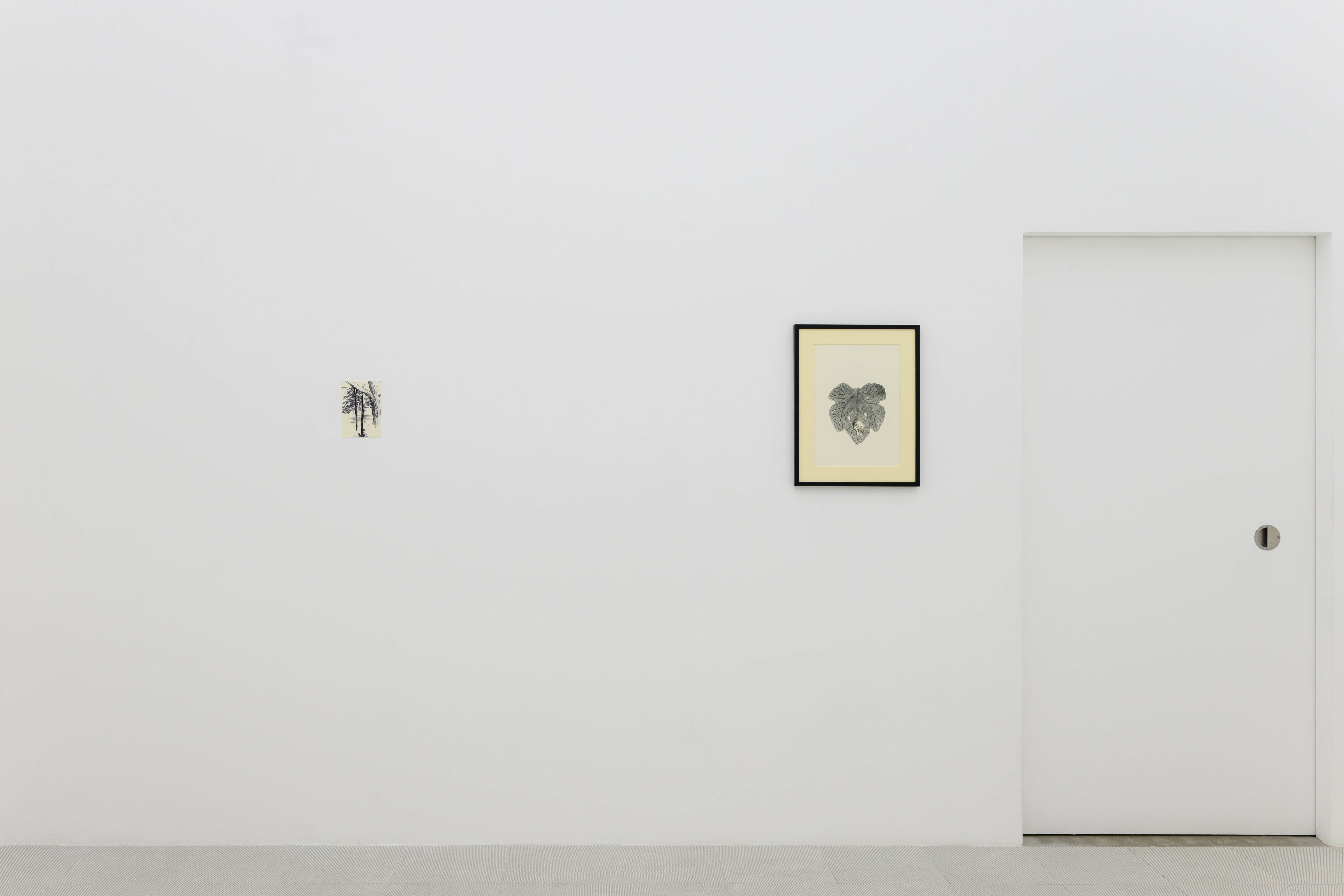
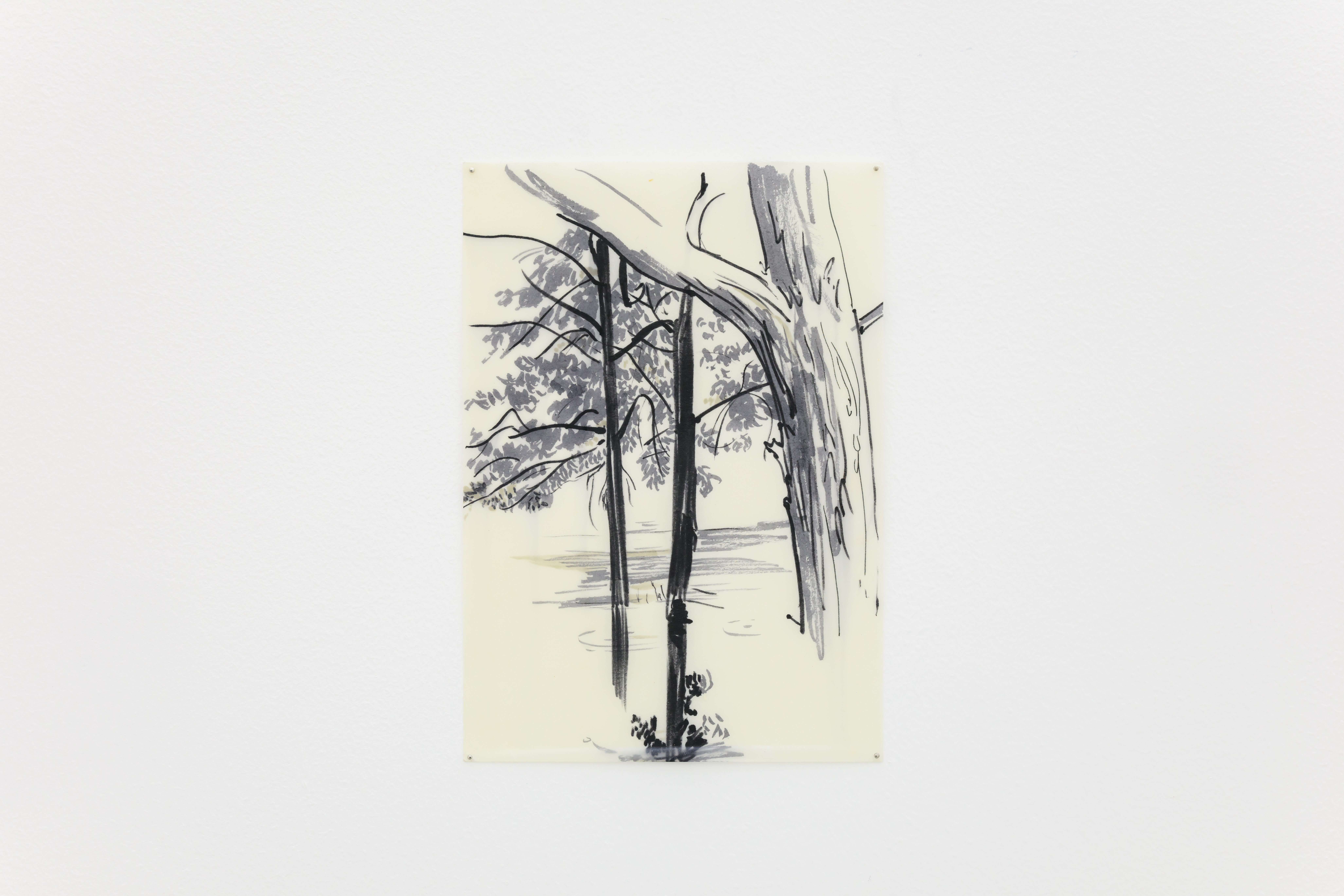
Ink on wax coated paper
19 x 13.5 cm
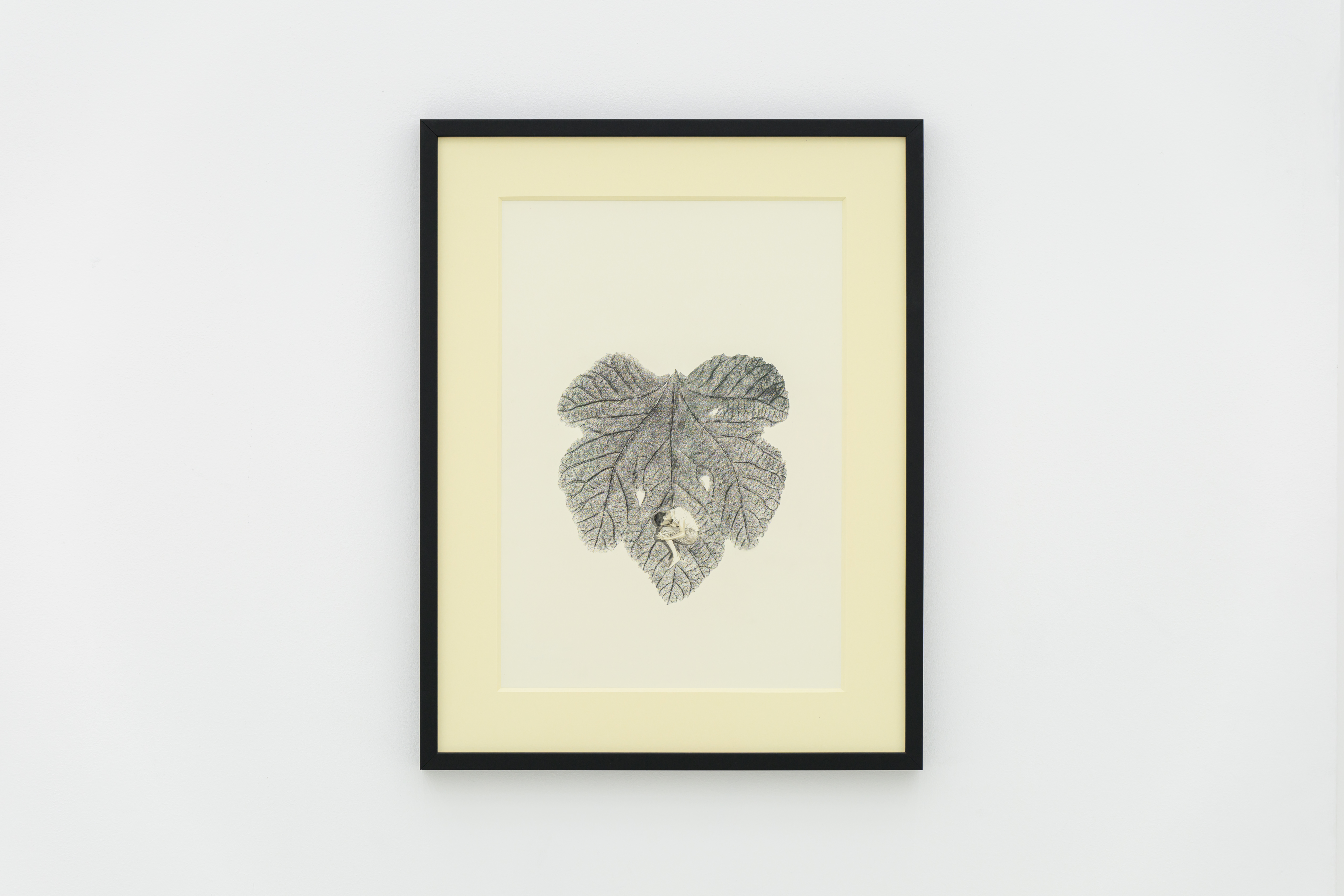
Framed: 54.5 x 42.2 cm
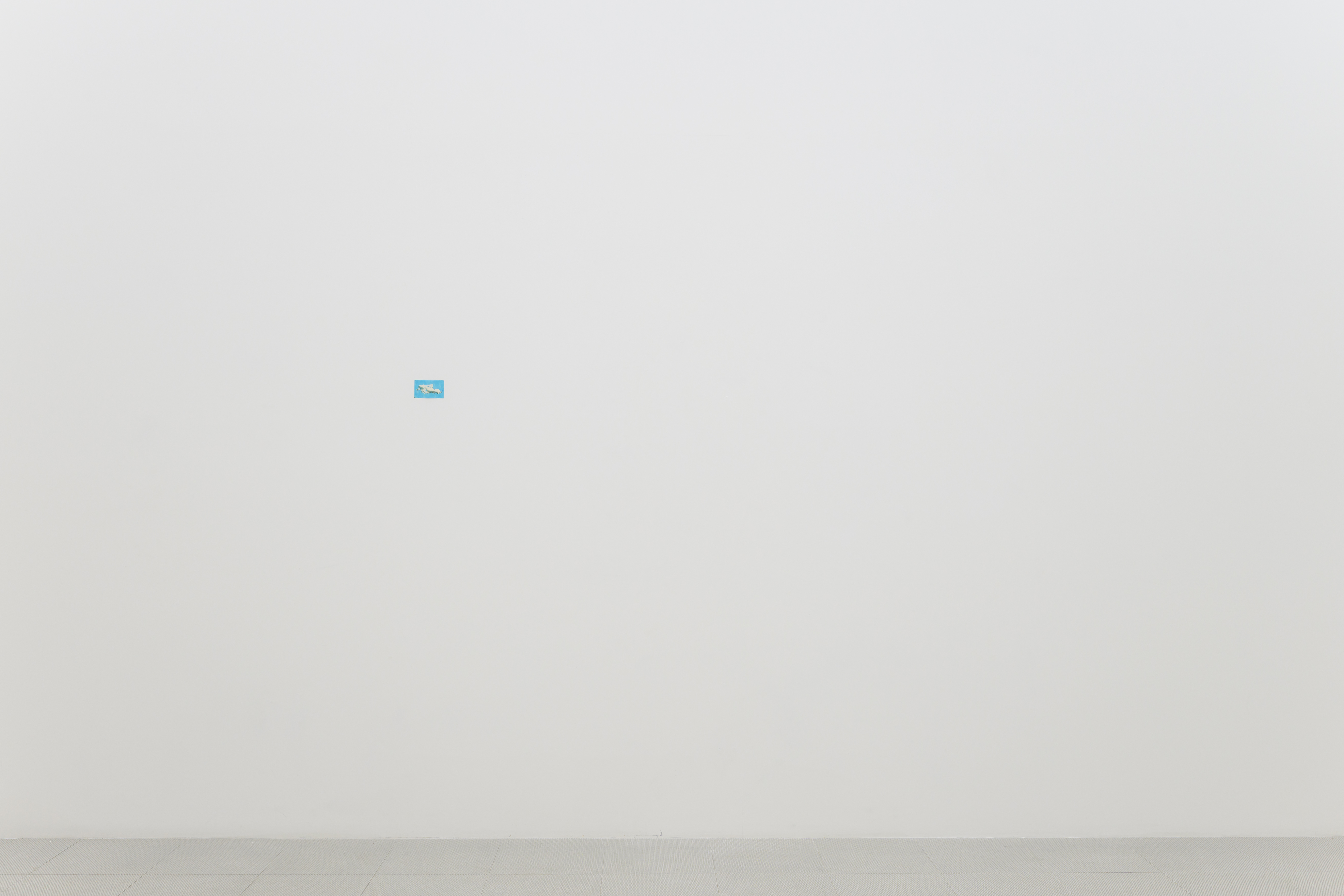
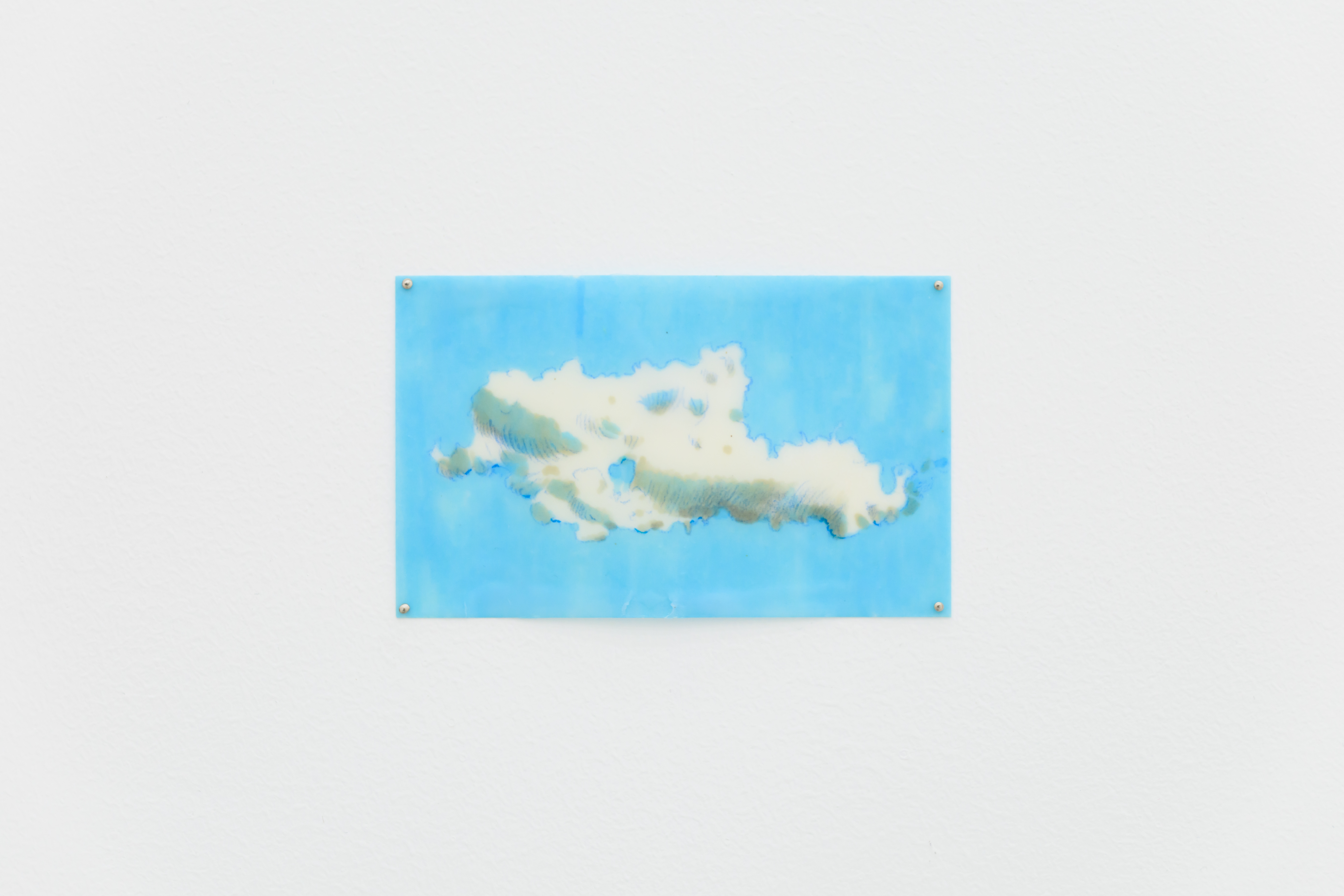
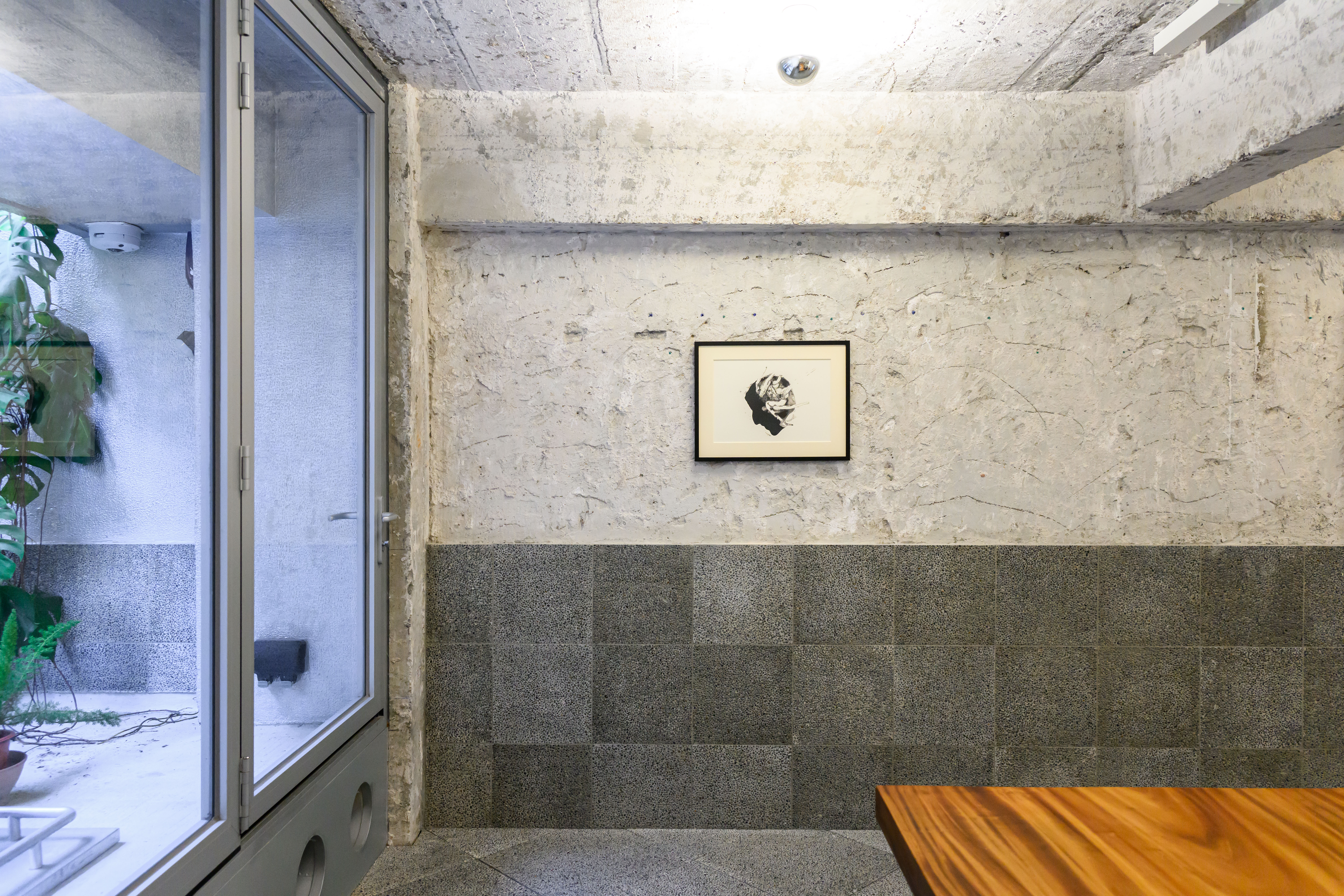
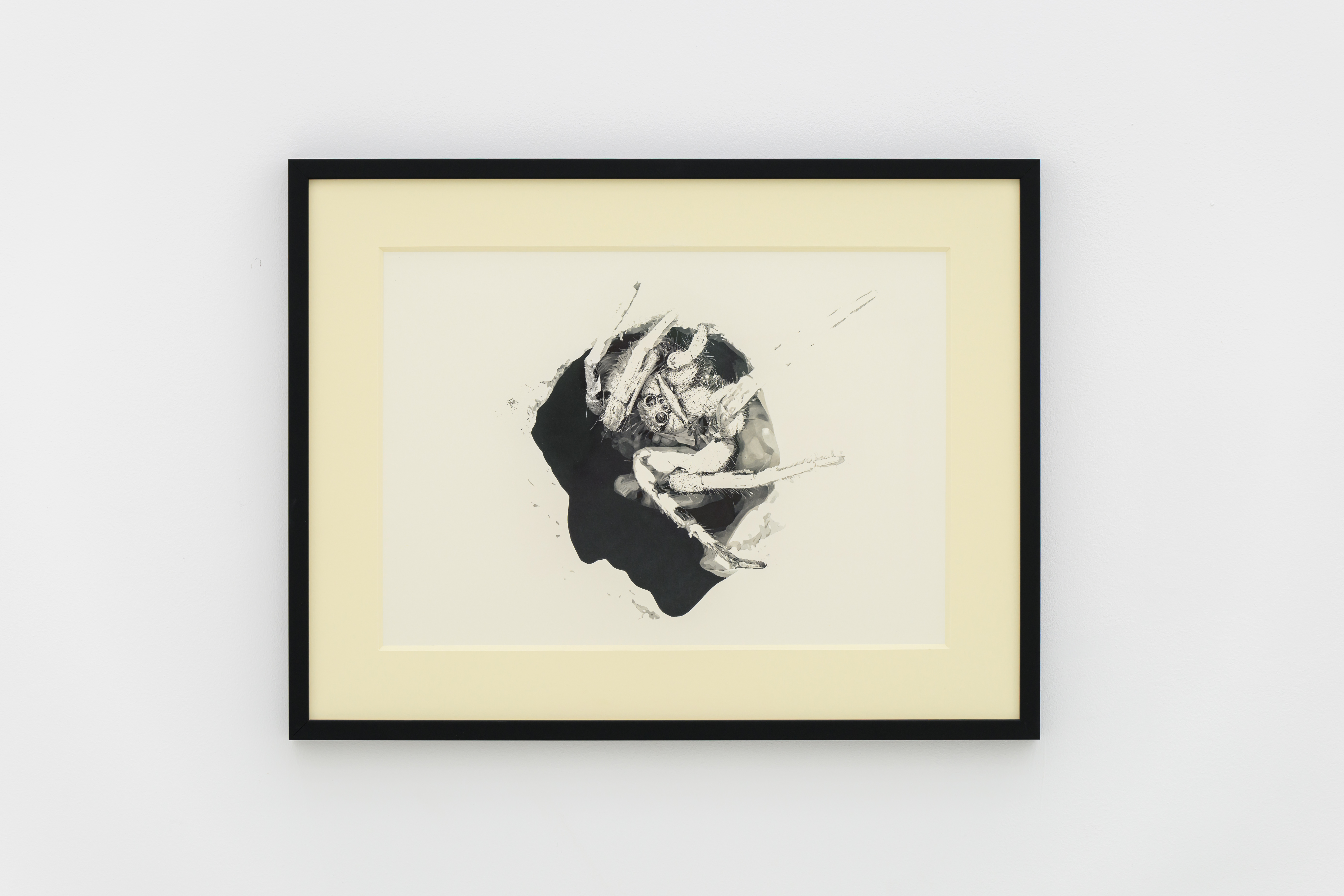
Framed: 42.2 x 54.5 cm
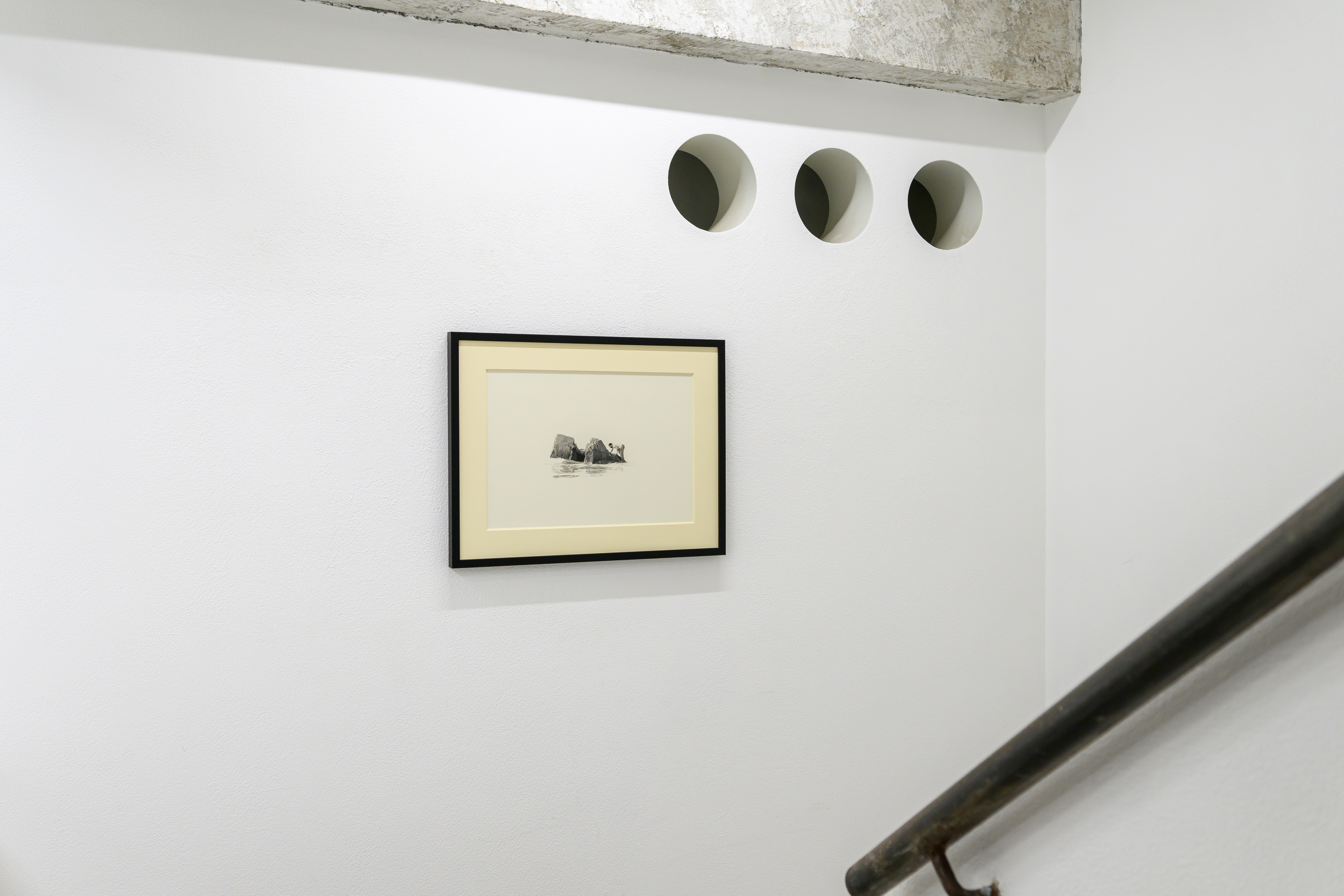
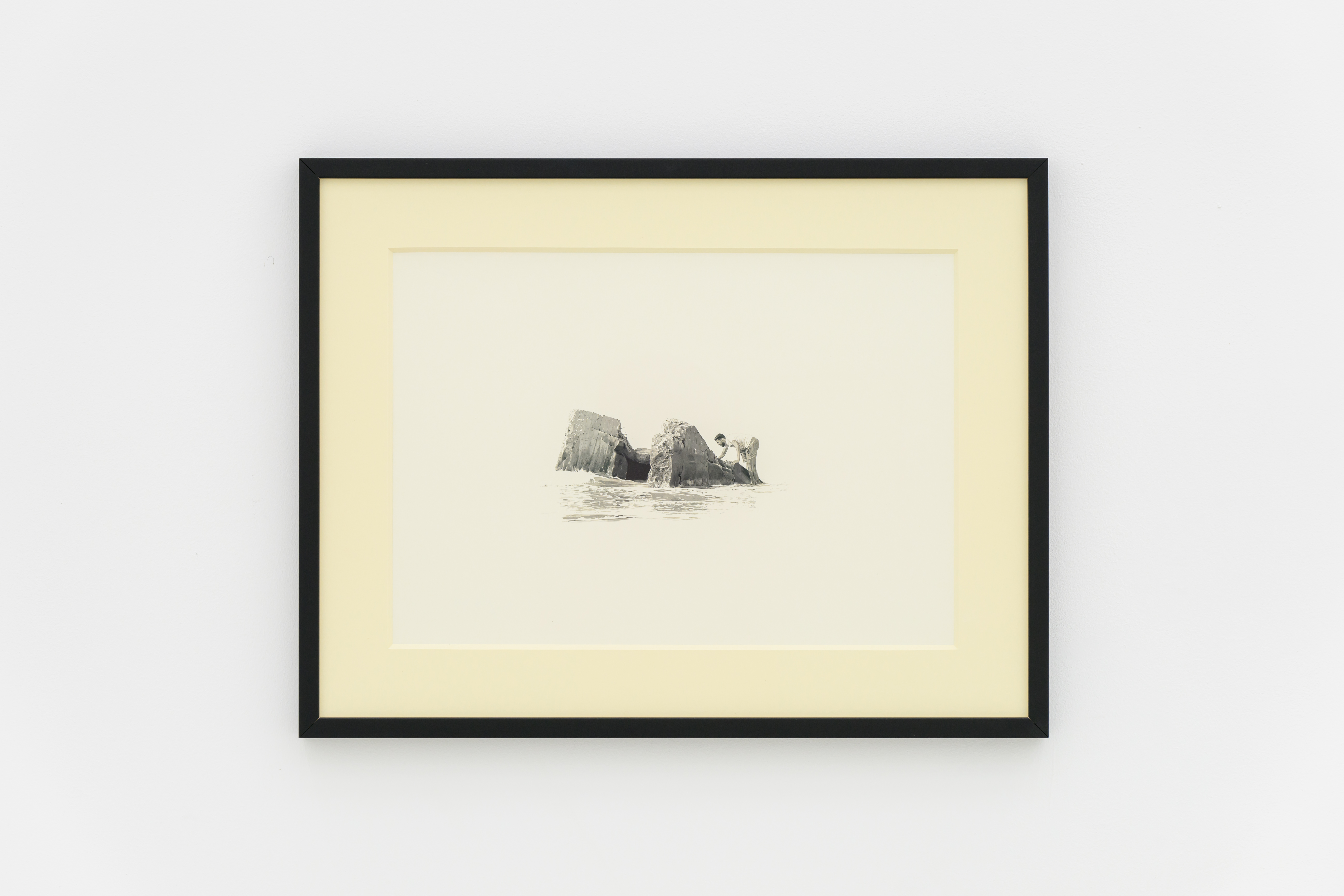
Framed: 42.2 x 54.5 cm
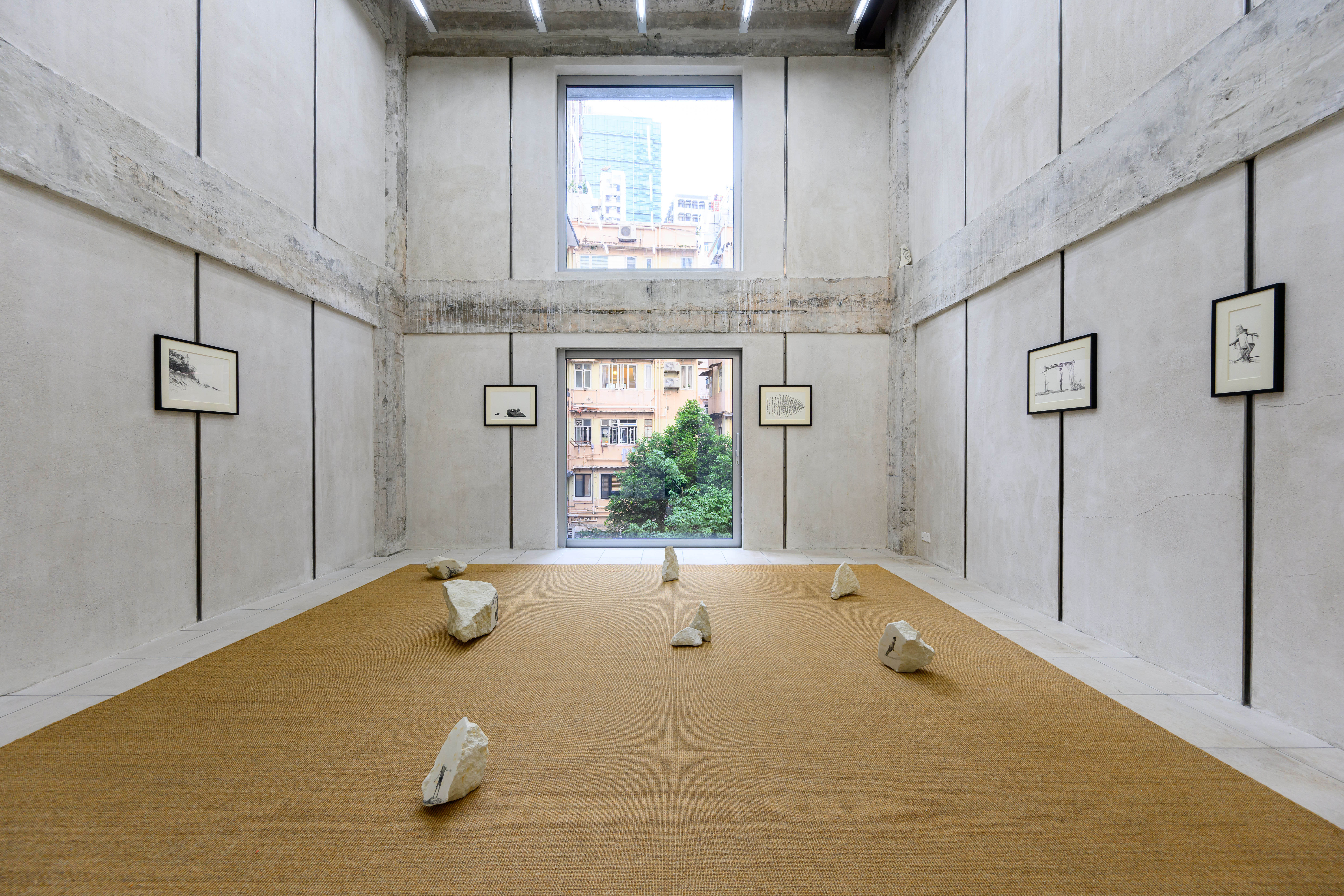


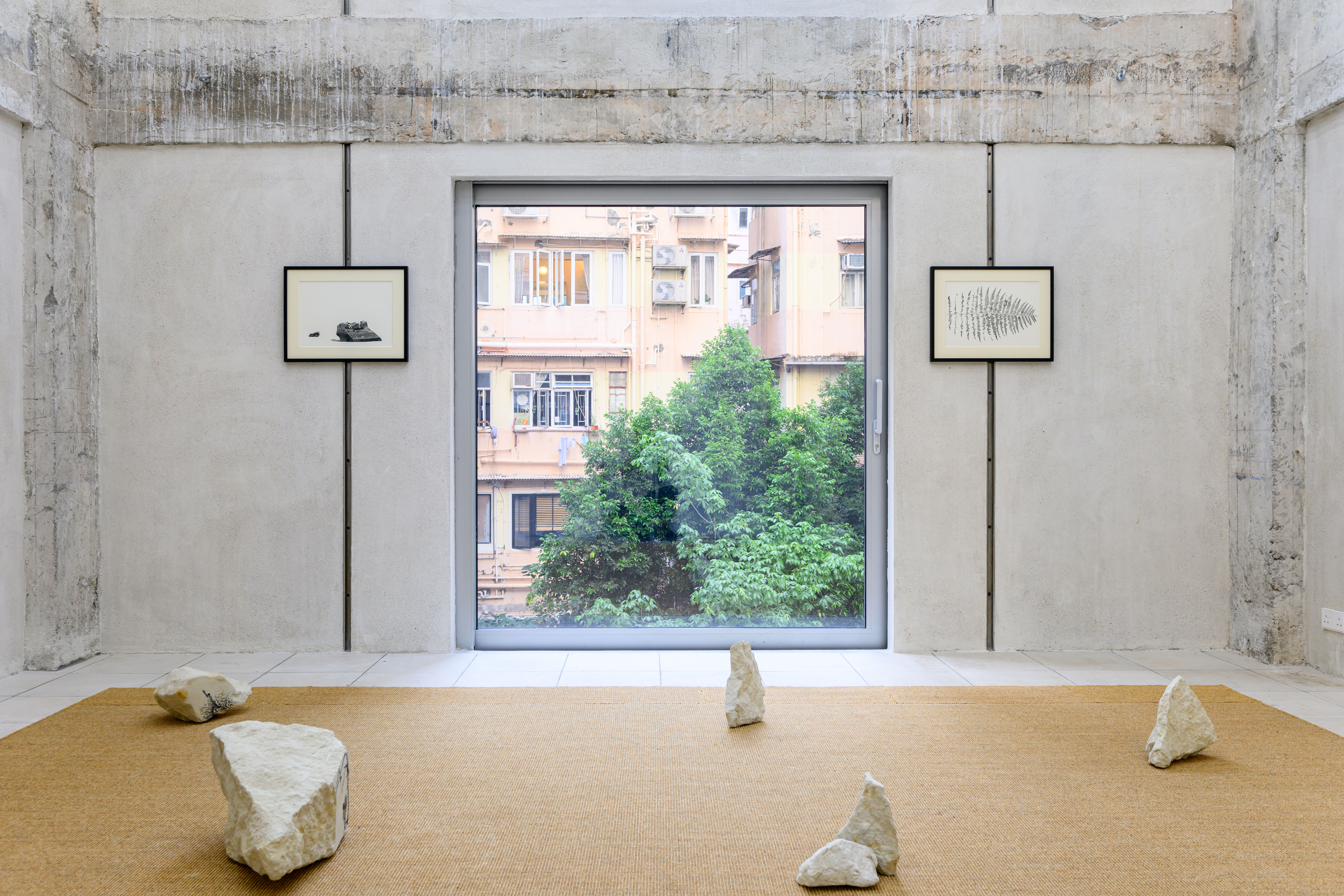

Framed: 42.2 x 54.5 cm
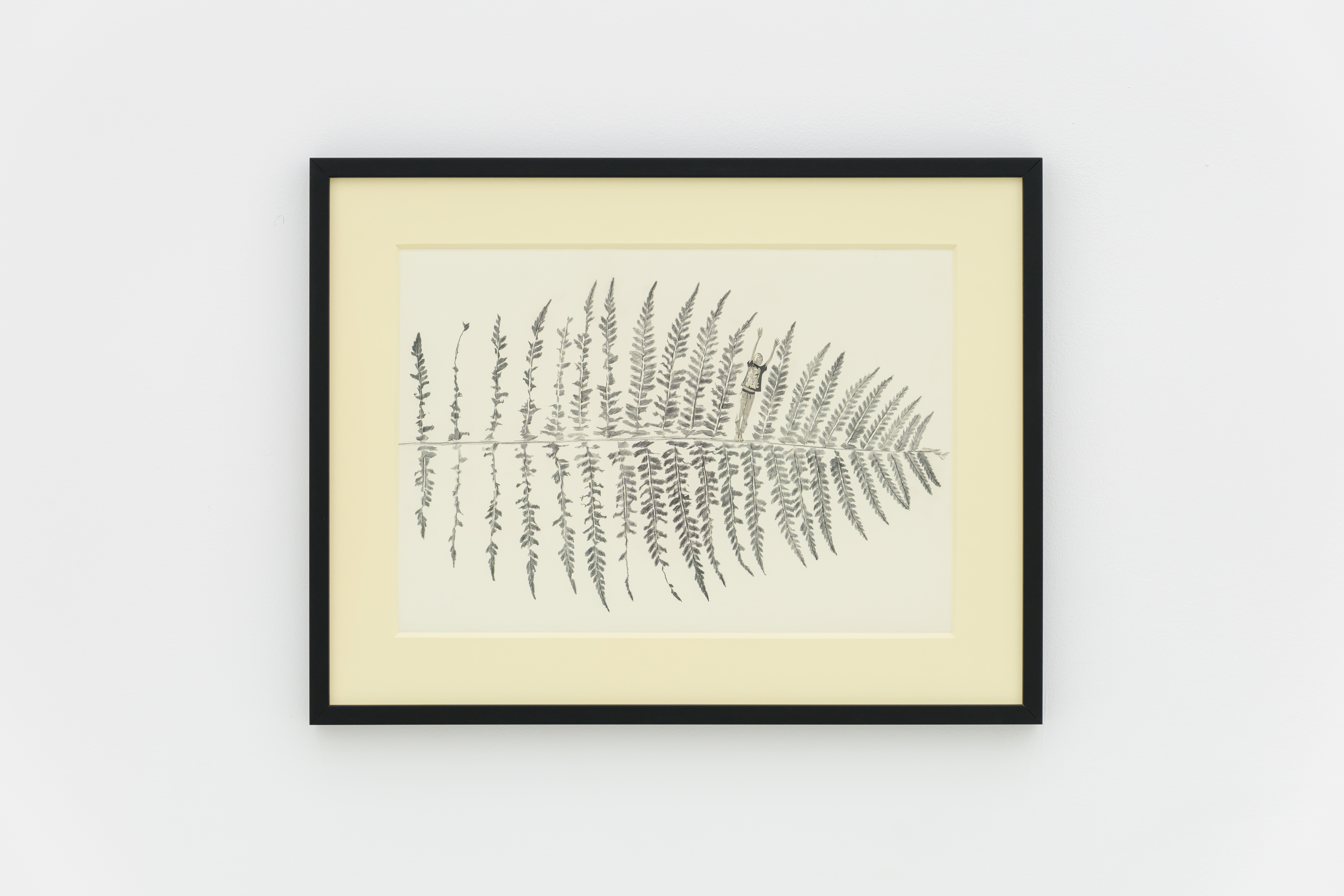
Framed: 42.2 x 54.5 cm
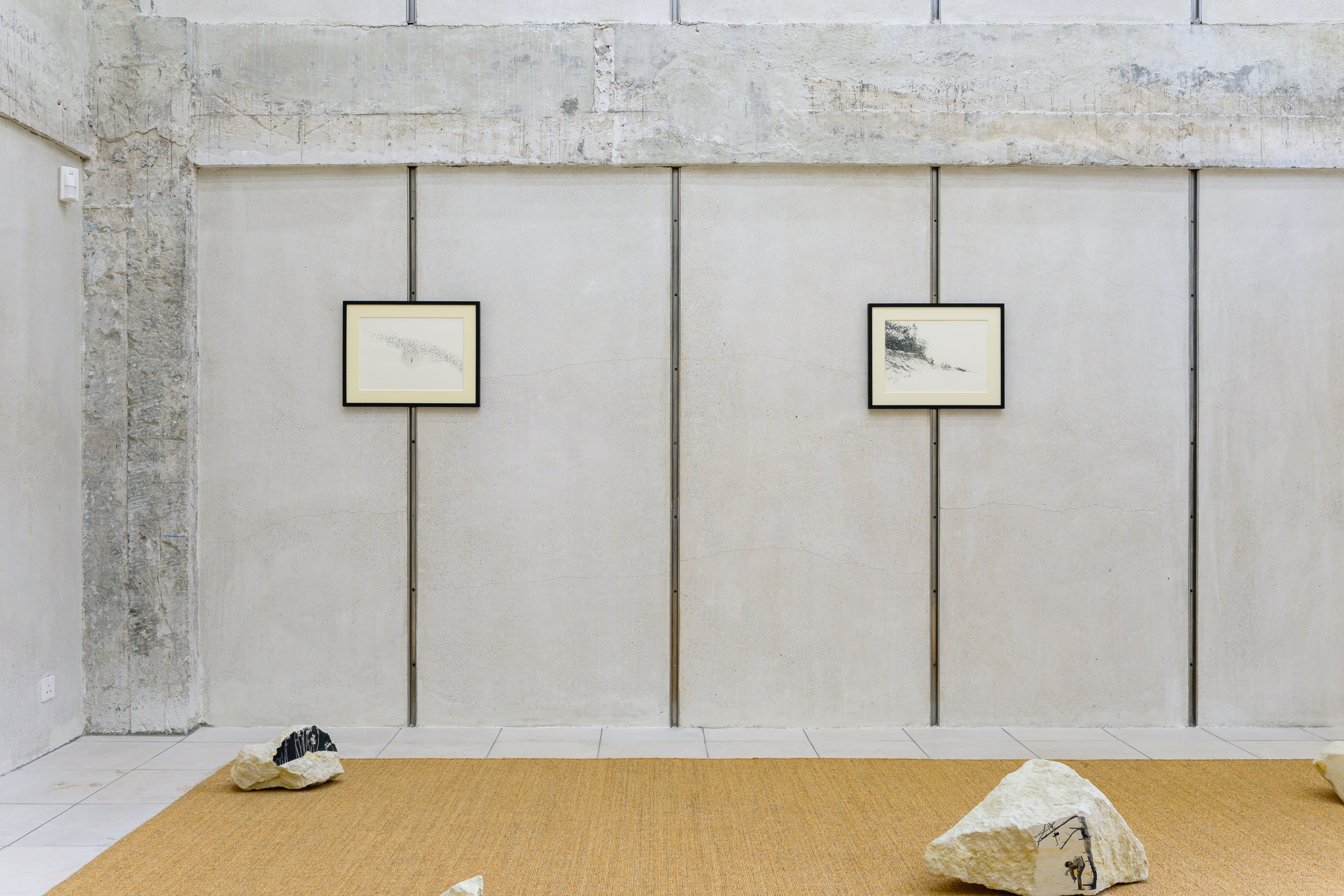
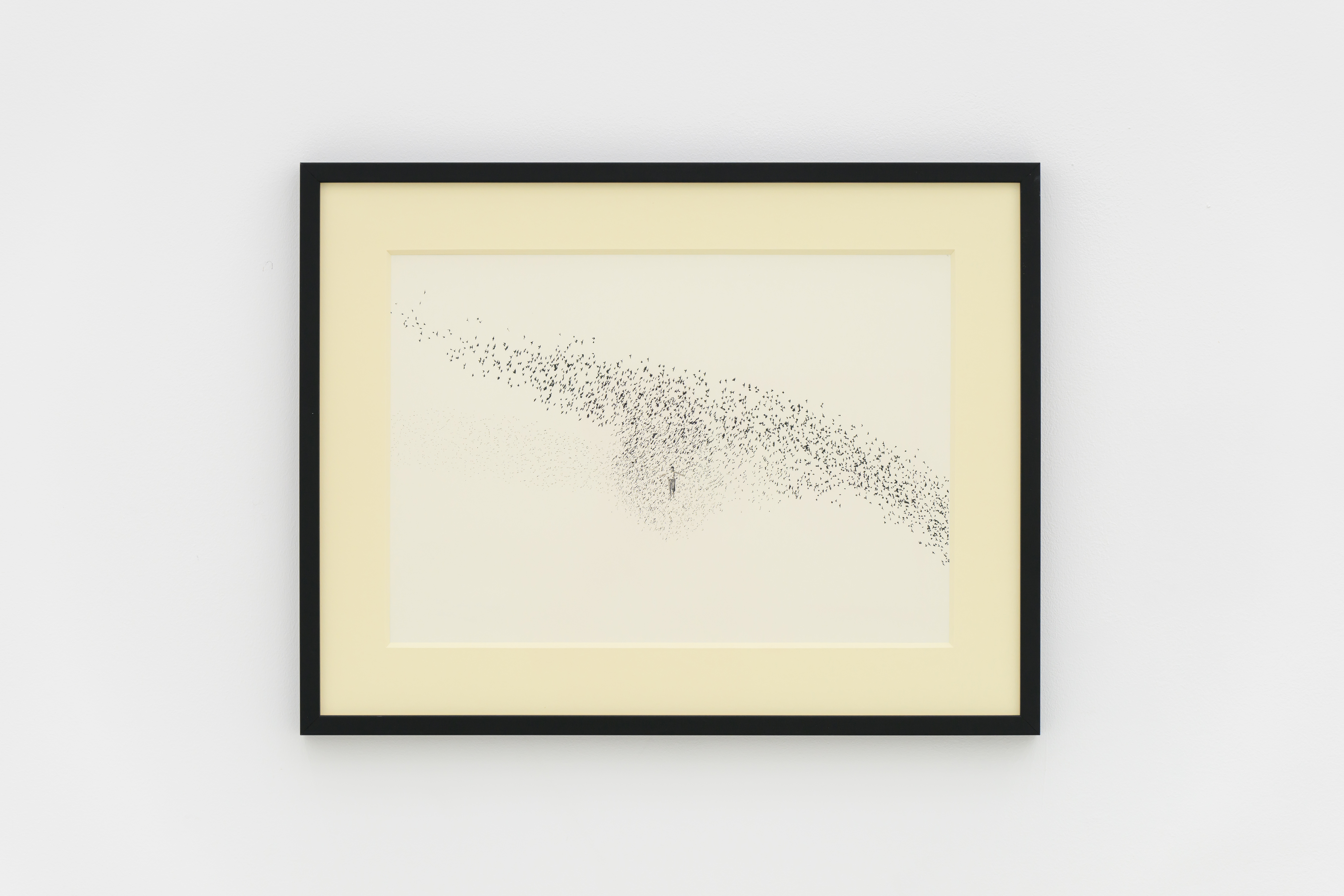
Framed: 42.2 x 54.5 cm
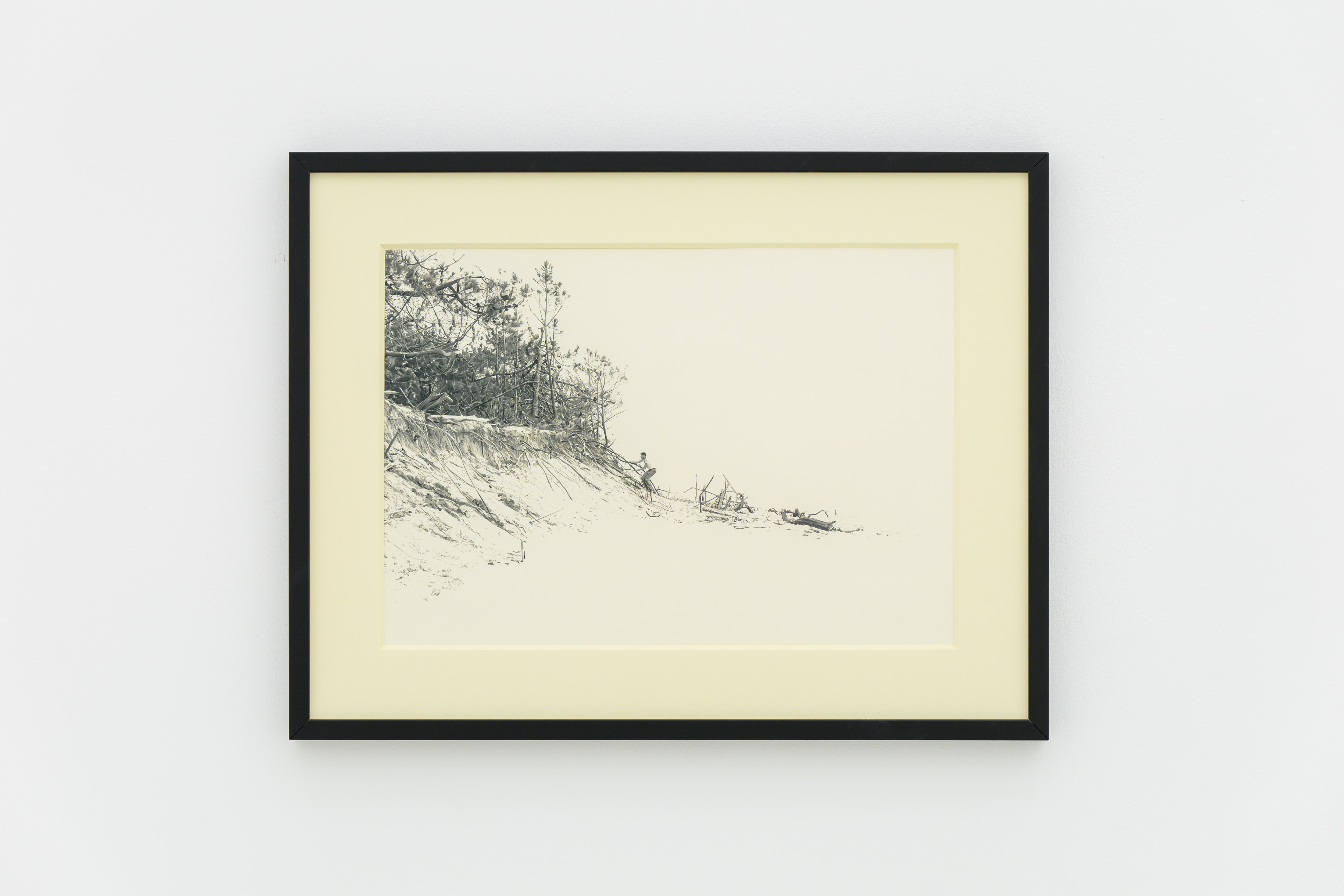
Framed: 42.2 x 54.5 cm
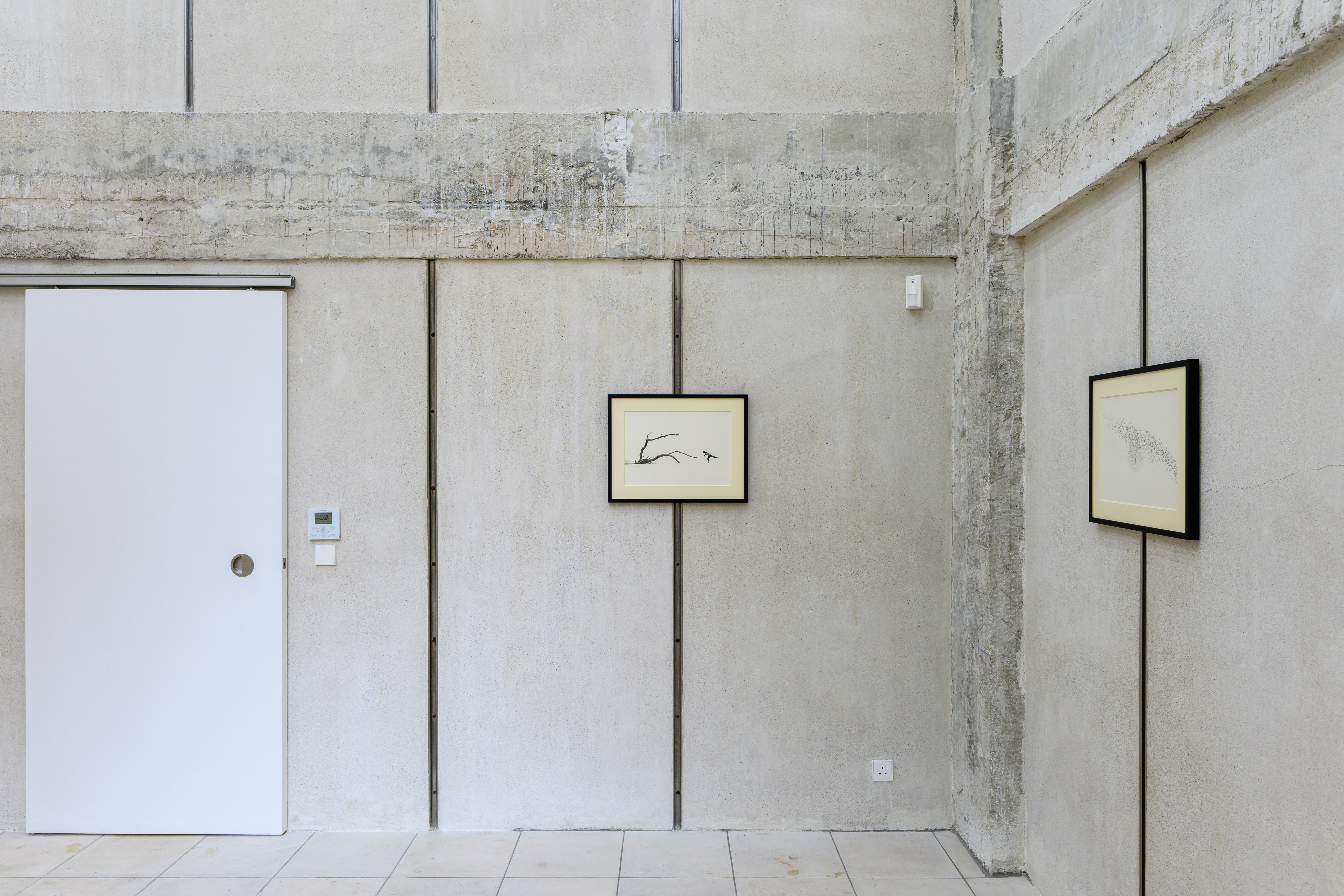
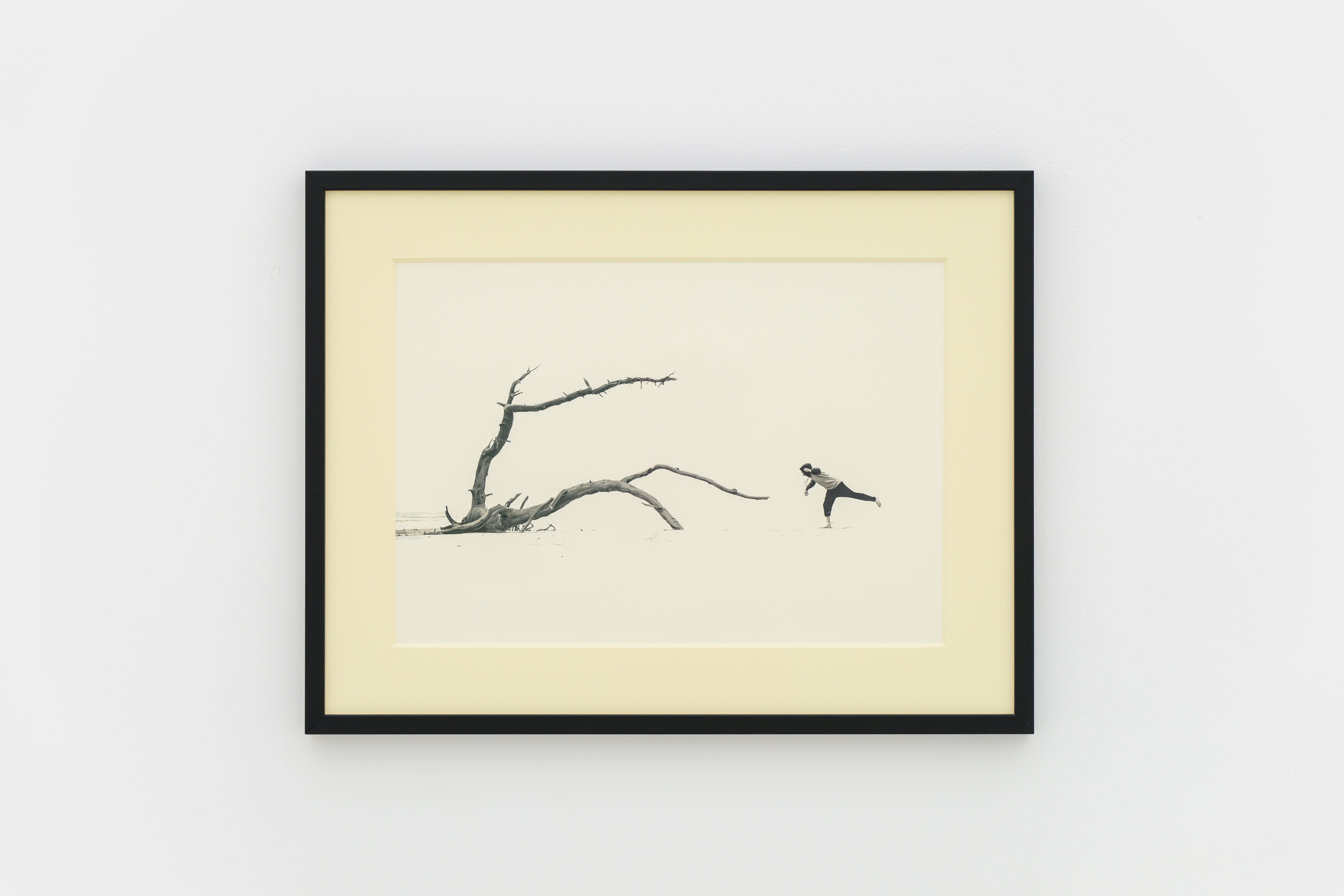
Framed: 42.2 x 54.5 cm
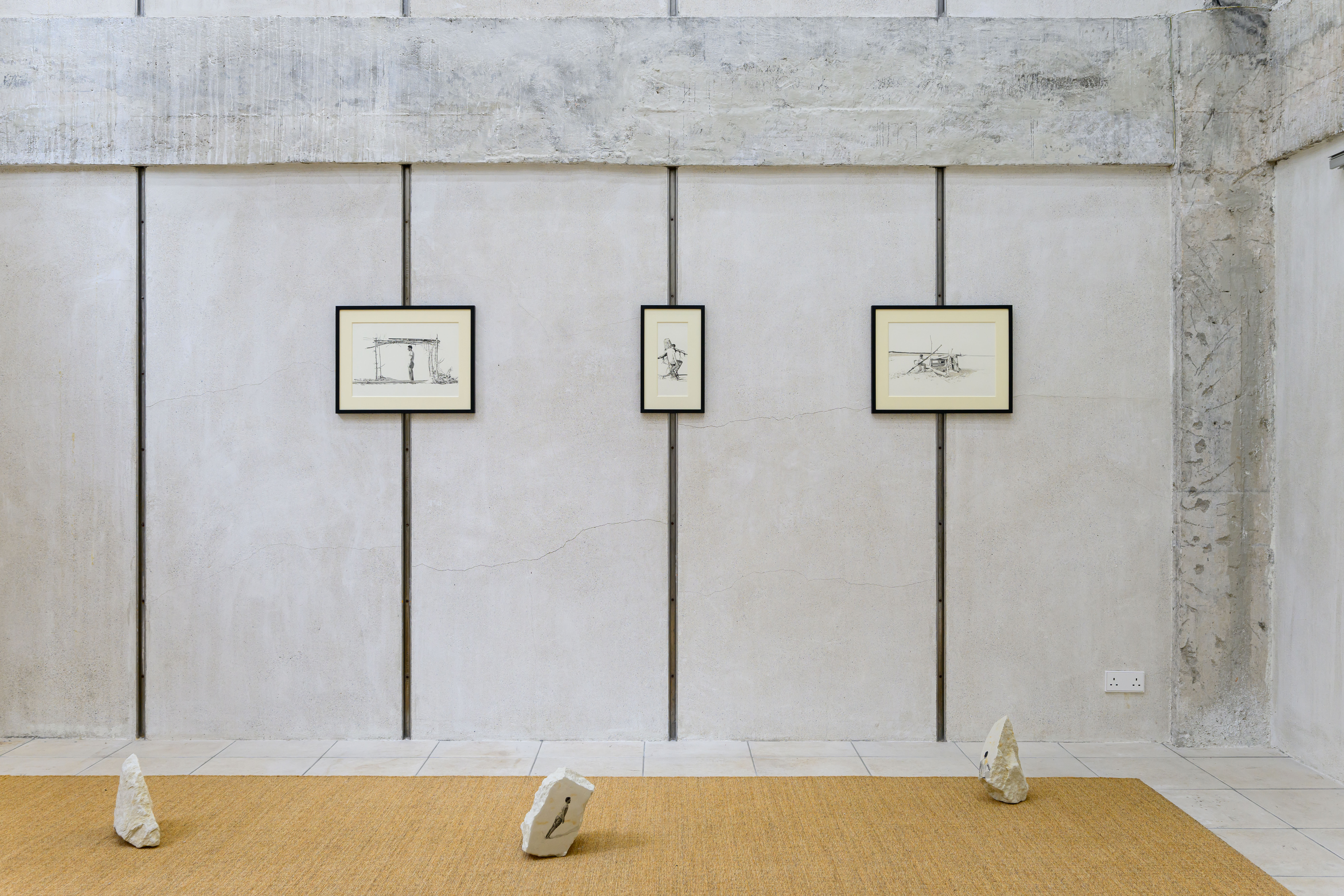
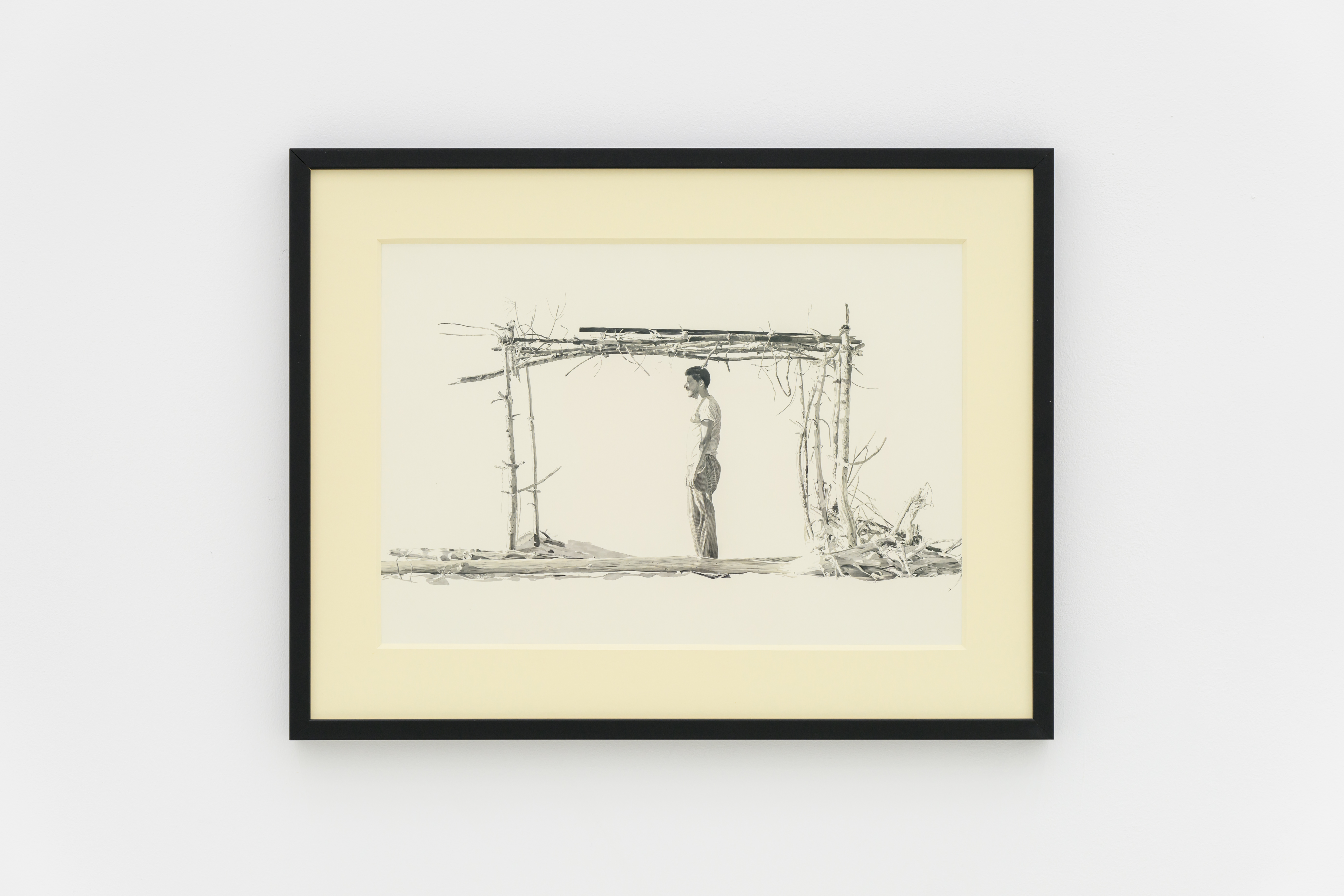
Framed: 42.2 x 54.5 cm
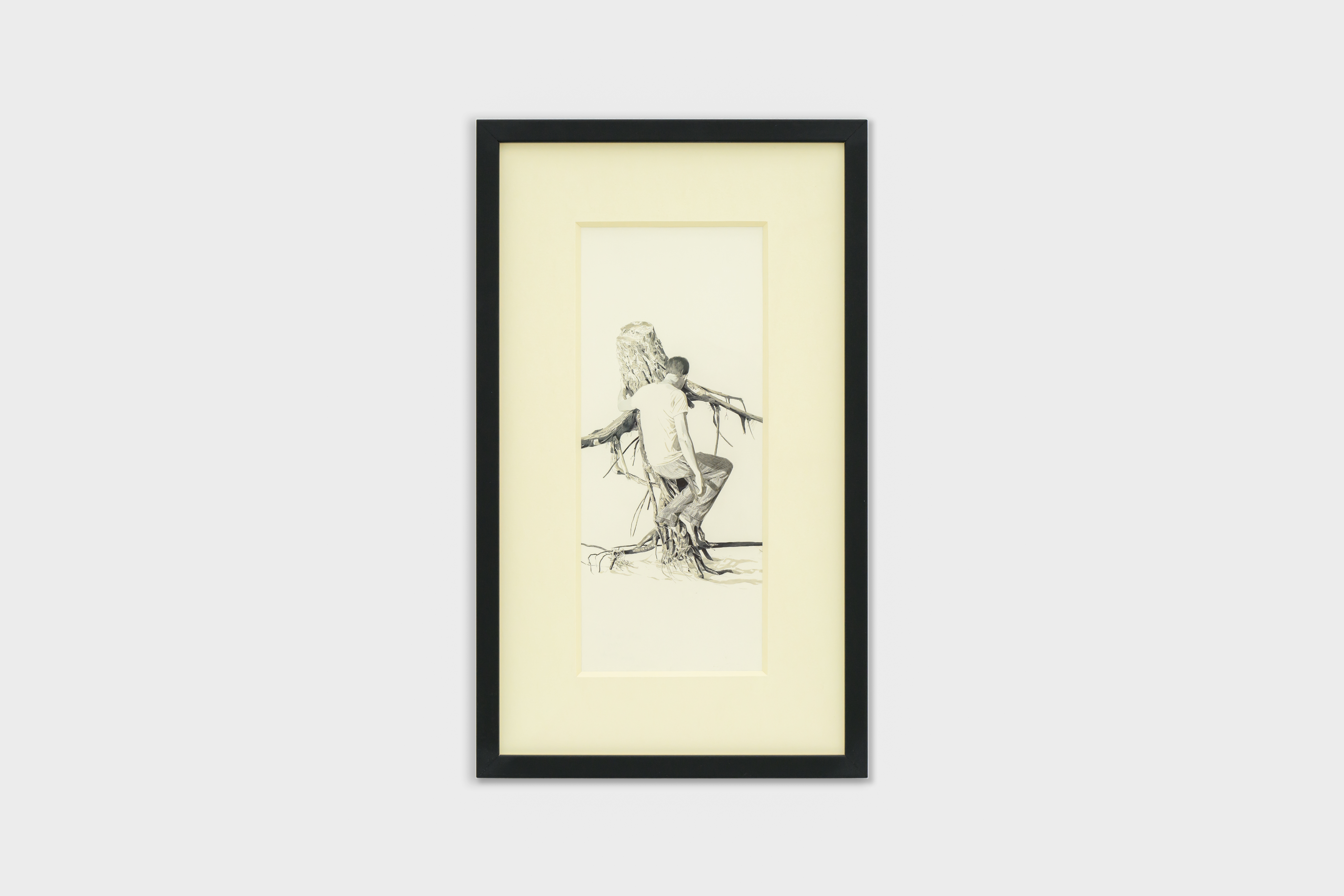
Framed: 42.5 x 25 cm
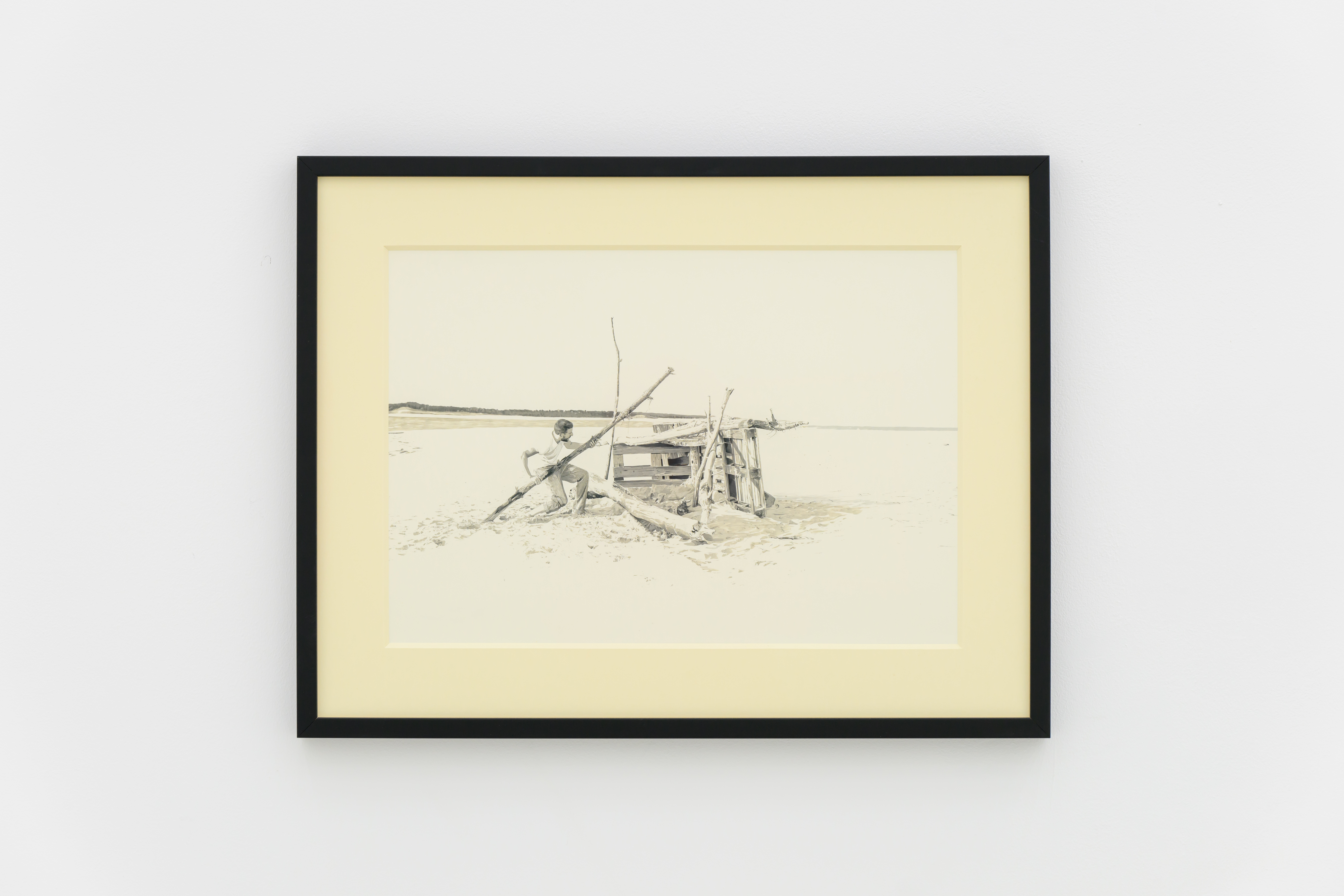
Framed: 42.2 x 54.5 cm
